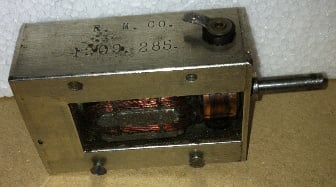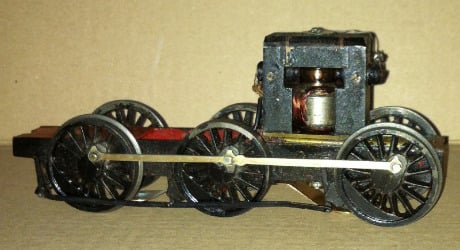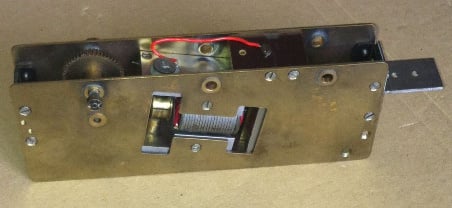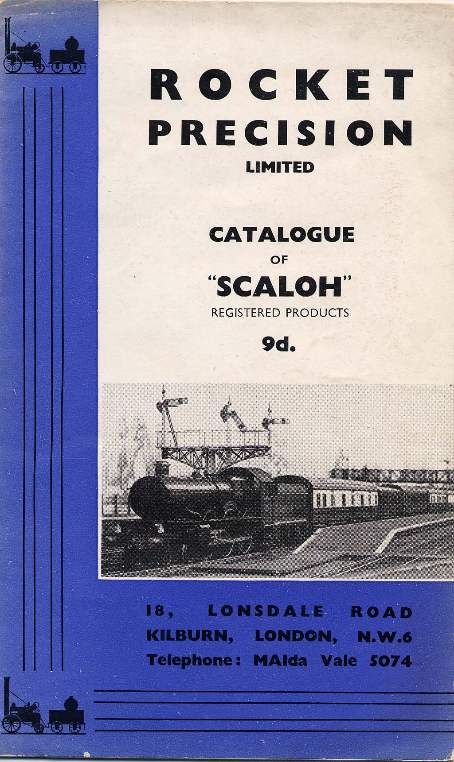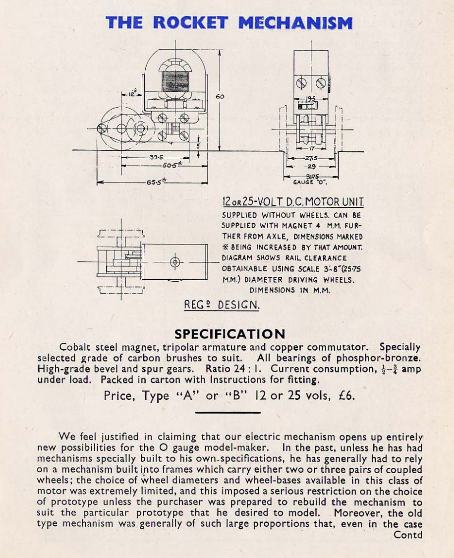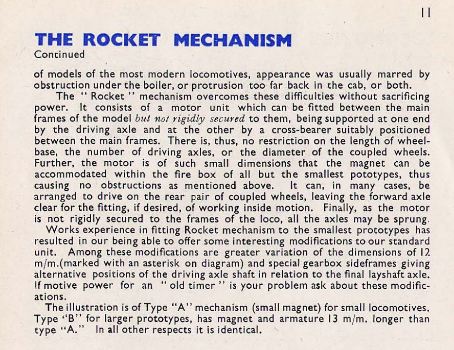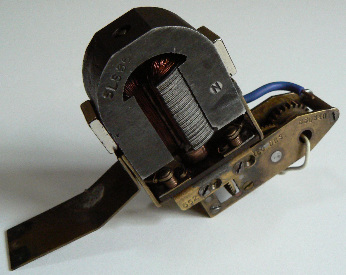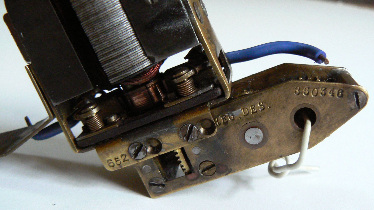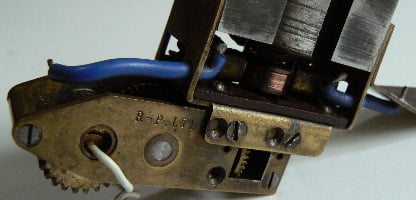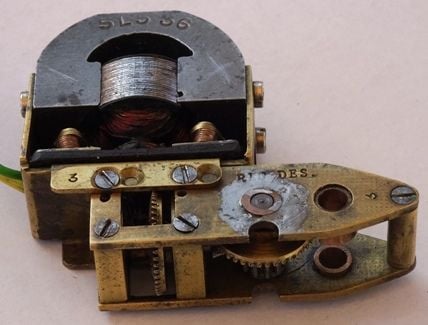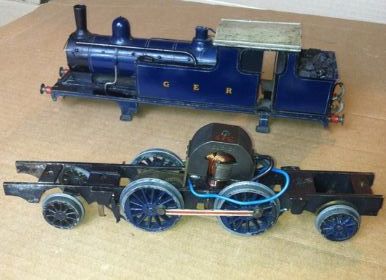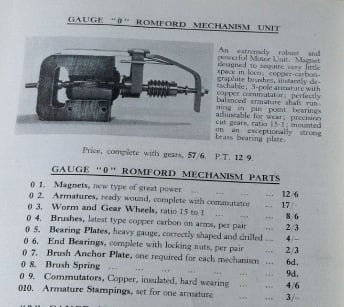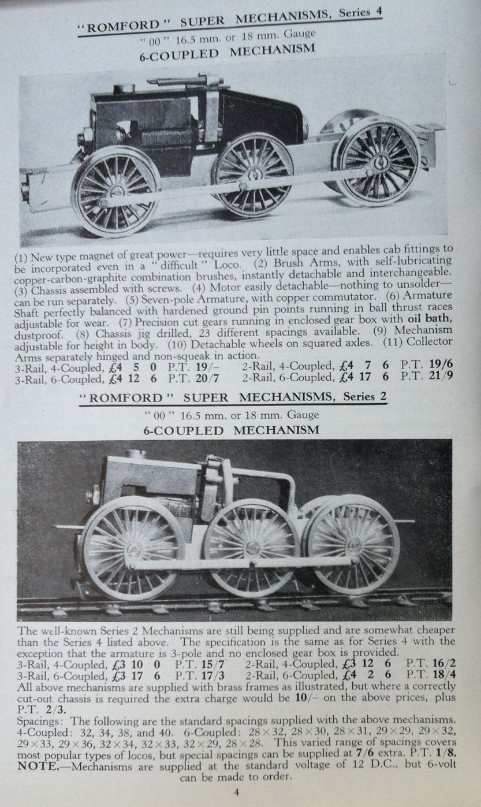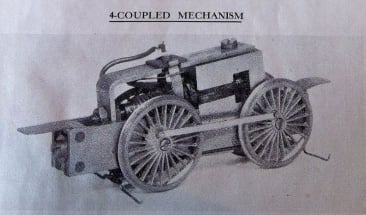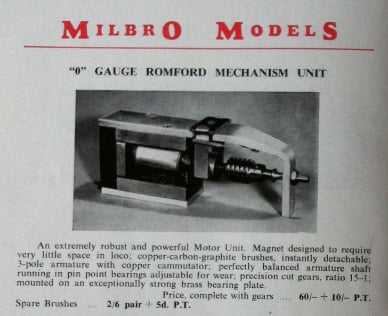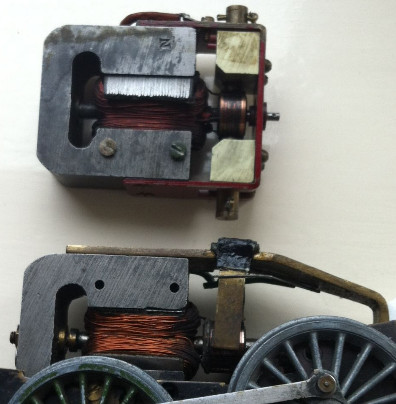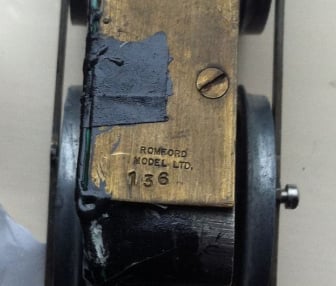
Other Vintage Locos & Motors***** Material in this section was most recently updated in October 2025 *****
Other Vintage Locos and Motors including examples and illustrations below for Bassett-Lowke, Dettmar, Leeds, Rogerson, Super Scale Models, Hunt, and a variety of motor types.
There are additional separate pages/sub-sections dealing with locos and motors by Bond's, Windsor Models and Exley, Vulcan of Kendal and Douglass Models. We also refer briefly below to Leeds/LMC, but the history of the Leeds Model Company and the models it supplied are covered elsewhere in great detail by David Peaacock. See especially his outstanding book, 'The Leeds Model Company, 1912-2012' (2011).
Copyright is retained by M.L.Harrison for all text and photos, except for those taken by other owners and enthusiasts.
M.L.Harrison 2020, 2025 © All rights reserved.
To give readers an indication of the content that follows, we begin with five 'sample images' of locos shown and discussed below. These five are a special order M&GN loco for Bassett-Lowke, a Leeds Model Company LNER 4-6-0, a Superscale Models Lord Nelson, a 2-8-0 believed to have been made for G.P.Keen, and a good commercial-quality LNER L1 by an unknown maker.
Illustrations VL1a-VL1e.
The first of these models is an East Anglian loco that is described in Fuller's book as Bassett-Lowke's 'last special order' (see Fuller, R., 'The Bassett Lowke Story', New Cavendish Books, London, 1984, pp.102-103). I am grateful to the Bassett-Lowke Society Newsletter for publishing a short piece I wrote about this engine; in 24, 2, May 2014, pages 13-15. Although at that time I was uncertain about the sub-contractor who had made the model, I now believe it to have been J.S.Beeson, and further pictures of this M & GN tank are included in the separate section of this site dealing with Beeson's 0 gauge locos. We discuss below on this page a few other items supplied to customers by Bassett-Lowke. Our second image shows some details of one of the Leeds Model company's excellent pre-war LNER 4-6-0s. The leeds Model Co. was one of the larger producers of 0 gauge models in the inter-war years and into the post-war period, and the Sam Fay is well known among collectors. We say more about some of the company's locos later in this page. We also show a similar model which seems most likely to have been a special order item and has excellent cab detail. The Lord Nelson model in the third picture is from a small batch made in the post-war years by Superscale Models, a small producer that built some very good quality 3-rail engines. Additional photos are shown later in this section. The fourth image is of a model freight loco that is believed to have been made for G.P.Keen, a noted enthusiast who commissioned first-rate commercial builders to make items for his model railway in the pre-war years. The attribution to Keen's collection is almost certainly correct, but it is harder to be sure about the builder. We say a little more about the loco (and another that was made for Keen) further on in this page. The fifth picture shows a model of an L1 2-6-4 tank engine. This class was built in the 1945-1950 period, and three-rail versions like this one seem uncommon. We say more about it later below, but are unable to determine its builder. It is a nice example of the attractive vintage models made to commercial standards that collectors may encounter but cannot adequately identify! Perhaps this problem is especially common for items made in the early post-war decades. Unfortunately, my photo doesn't do justice to the lovely paint colour, and the same applies in the additional pictures shown later.
Coverage in this section: The wide range of vintage models
This section of the website aims to add to what is readily available about particular types of vintage model locos made in the UK before and after World War Two, to complement and supplement the material provided in other parts of the site. It is hoped to interest some experienced collectors of vintage trains, but especially perhaps to assist in a small way any newcomers to collecting who may be unfamiliar with the companies and products covered. With these goals in mind, the plan is to provide some illustrations and discussions of loco models by various makers, as well as pictures of some of the motors supplied. Coverage of mechanisms includes examples from the earlier post-war decades. Positive responses from readers to this part of the website led me to expand it by adding separate sections to parallel this one, including some illustrative material on locos by Douglass Models and Vulcan of Kendal, Bond's, Windsor Models and Exley. We will not present any examples from Hornby on this website, although of course that company made a huge contribution to UK 0 gauge before and after the second world war. Hornby model locos appear frequently in books and on dedicated websites and can also be observed readily on the sites of traders and on Ebay. Thus it is easy for enthusiasts to find pictures of Hornby engines, such as the very handsome Yorkshire or Bramham Moor 4-4-0s, and to consult intelligent commentaries by experts. At the same time, coverage on this Milbro website is primarily of soldered models rather than of those made using 'tabbed' construction (although we also refer to the use of glass fibre; see our next paragraph below). Like Hornby, Bassett-Lowke also used the 'tabbed' construction method as a way of efficiently creating models in large runs, albeit along with some soldered engines that were generally built in smaller numbers (or were for live steam running). Indeed, Carlson praises the high quality Bassett-Lowke achieved with their 'Flying Scotsman' loco when using the 'tabbed' medium. Noting the link with German practices, he writes, "Since lithographed finished and tabbed construction were the hallmarks of the Nuremberg style, the Bassett-Lowke Pacific could be considered the highest expression of that style" (Carlson, P., Toy Trains: a history, Gollancz, London, 1986, p.148). This tinplate model was indeed an outstanding achievement, and that may be why so many examples seem to turn up that have been enhanced, rebuilt or repainted by enthusiasts or (very occasionally) by other firms. Another option was to build locos using materials other than tinplate, brass or nickel silver. The discussion of Douglass Models elsewhere will touch on the use of 'Bondaglass', from which the company made loco bodies. The descriptions and instructions Douglass Models provided made clear that this material was glass fibre. Creating mouldings in that material was (as the firm put it) "something new in model locomotive construction" (from specification and instructions to go with "A4 Boiler Case", undated). In the sub-sections below on Bassett-Lowke, I include some examples of Bassett-Lowke engines that have been worked on or provided by other builders. After thinking about this a bit more, I decided in November 2020 to add a short comment on the complete loco rebuilds undertaken in the pre-war and post-war periods, especially with Bassett-Lowke engines. Thanks to the kind support of one of my contacts, I have learned that there were commercial rebuilds of Bassett-Lowke models in Australia as well as the UK, and this is mentioned again briefly when I refer to rebuilds. I would argue that these rebuilt models are a significant part of model railway history. Given this perspective, comments have also been included to outline the character of Bassett-Lowke's 'Nuscale' engines, which I am informed became available from 1957. I will not say much about locomotive kits, although they have played very important roles in the development of railway modelling, perhaps especially in recent periods. Today's best kit-built models reach a very high standard, and represent full-sized locomotives in a detailed and accurate way that was very rare in the pre-war years of coarse-scale modelling. Amongst the earlier pioneers of kit production in the post-war years was the Leeds Model Company, but several other makers also produced kits that were widely known during what might be seen as the 'late vintage period' (when 'traditional' coarse-scale hand-built locos remained relatively more important in the 0 gauge scene than today). CCW, for example, seems to have had a substantial impact over a particularly long period, and also took over production of Dawson kits (another pioneer) at the end of the 1960s (see Gauge 0 Guild Gazette, IV, 1, January 1969, p. 18). CCW's impact in the post-war years was not only through conventionally-soldered kits, but also via their white-metal locos which could be assembled using adhesives. To judge from what may be encountered today, their cast white metal kit for an LMS 4F 0-6-0 seems to have been especially popular, and I include pictures below of one of these locos with some of the associated paperwork and an advertisement from 1965 (see Illustrations VL20 and VL21). I think the LMS tenders were rather good for their time. Soft-metal components tended to mean heavy engines. Instructions for the 4F stated that the kit would be assembled entirely with adhesive, a tube of which was supplied. It was also apparently intended, however, that cast white metal parts could alternatively be joined by low temperature soldering. I understand that some advertisements for CCW locos in Bassett-Lowke catalogues offered the body kits with a brass boiler and smokebox along with soft metal castings for the rest of the parts, so the company perhaps varied its approach over time. CCW's other kits (in tinplate, brass or nickel silver) could be used to produce models much more in line with the hand-built soldered engines produced by commercial companies. Several other important contemporary kit-makers provided their own similar product lines. This factor complicates the identification of vintage locos made by commercial firms. Indeed, kits could be used by some producers of models to simplify their task of creating a loco, and evidence may be found of specific cases of that kind. For instance, it was reported by the late Alan Cliff that Vulcan of Kendal (see the separate section on Douglass Models and Vulcan of Kendal) produced a small number of 2-6-4 tanks and Stanier Class 5 4-6-0s that were in the main made up from Dawson nickel silver kits (see Model Railway Enthusiast, 6,4, April 1999, pp. 24-25). Today, second-hand tinplate or cast metal kits turn up from time to time on Ebay in unmade form. A CCW example, and two of their mechanisms The development of kits over time parallelled in some ways the shift towards greater detail and fuller representation that occurred for scratchbuilt/handbuilt loco models. The LMS loco shown below probably exemplifies quite well what could be offered in terms of quality and ease of assembly in the mid-twentieth century decades. When kits were not of soft metal parts but of tinplate or nickel, a skilled modeller might sometimes create in this period a high standard loco not very different from a scratchbuilt engine. Some tinplate kit models seem to have a strong section of brass running along under the footplate edge, rather like a larger version of the supporting sections used under the footplate by Windsor Models and on occasion by other makers (see photograph below, Illustration VL25).
Illustrations VL20 and VL21. Although kit-built engines lie a little beyond the scope of this website, it is important to acknowledge their role especially after World War Two. The pictures show a CCW white metal kit-built model of a 4F tender loco in LMS livery (see comments above). The left-hand paperwork on the first image is part of the instructions provided for builders, and I have also photographed a CCW advertisement for their 4F and 3F locos. (I apologise if any copyright has been breached here, but if so I hope that no harm has been done, given that these documents are probably both over fifty years old.) CCW also contributed in the field of mechanisms by offering its own products. These seem to have become available near to the end of the vintage era (although that period doesn't really have a clear boundary), and some plastic was deployed. I have no systematic knowledge of their operational merits, but it may be useful to show a couple of illustrations now. The first comes from an extensive 1959 review in the Model Railway News that gave the 'Mark Twain' motor a very warm welcome. The reviewer referred to two versions (Major and Minor), and had tested the latter. It had a three-pole armature, and the housing was a plastic moulding. The 'gear chain' was described as 'beautifully executed'.
Illustration VL22. A 'Mark Twain Minor' motor unit, supplied by CCW. See 'talking shop', in the Model Railway News of November 1959 (35, 419, page 236).
Illustration VL23. A 1959 advertisement from CCW, featuring their 0 gauge motor bogie. I have not encountered one of these but it must have seemed very useful to modellers. See Model Railway News, March, 35, 411, page xiii. The vehicle this mechanism had been fitted to here was most likely a made-up wooden CCW kit. Their coach kits in this period shared some features with pre-war Milbro products.
Soldered kits with tinplate, brass, or nickel silver bodies As well as CCW, other important contemporary kit-makers provided their own lines, and some kits were also available before the second world war. This factor complicates the identification of vintage locos made by commercial firms. Indeed, kits could be used by some producers of models to speed up their task of creating engines, and evidence may be found of specific cases of that kind (see comments above). Today, second-hand tinplate or cast metal kits turn up from time to time on Ebay in unmade form. We show now an excellent example of a model created using kit parts and soldered construction.
Illustration VL24. This attractive 0 gauge 2-8-0 body was built by John Robinson from old post-war standard nickel silver and tinplate kit parts. He reported that quite a lot of work was needed when using them! The job has been handled very successfully. The fitting on the top of the body in front of the cab came from the Simpson Collection, offered at auction in Nottingham in December 2008. This fitting was amongst an auction lot I bought containing spares and accessories, and was probably supplied to Simpson by J.S.Beeson.
Illustration VL25. This shows the underside of the 2-8-0 body. The large brass sections running along under the edges of the loco base plate can be seen here. They often appear on soldered kit-based models from the post-war years. They tend to be bulkier than the ones fitted by pre-war commercial makers who sometimes used a similar constructional feature.
The wide range of vintage models We show here various pictures of 0 gauge engines, mostly made by specific known firms. This indicates something of the diversity and range of UK-made vintage models that may appear on stalls at train fairs or meetings, at Gauge 0 Guild events, in auction house sales, or on Ebay. Bassett-Lowke and Leeds are mentioned, as two of the most significant suppliers from the pre-war era and through into the post-war years.
Bassett-Lowke A great deal has been written about this firm, and its products are widely known amongst 0 gauge enthusiasts. Examples from the standard Bassett-Lowke ranges of the pre- and post-war periods can be seen readily in published literature and at specific places on the internet. Furthermore, some of the loco types that were produced in large numbers may be found fairly frequently in Ebay auctions or on the sales lists of traders. The examples below, therefore, have been chosen to illustrate very briefly some more unusual facets of the firm's 0 gauge locomotive sales, a few details of construction and finish, and the potential of Bassett-Lowke models for adaptation, rebuilding or 'super-detailing'. This could be by enthusiasts, by the company itself, or by other firms and agencies.
Illustration VL30. Thanks to the enthusiast who sent me this picture from post-war Bassett-Lowke advertising. It reminded me of how impressive this small engine had always looked in its photographs. As can be seen here, the tank loco was apparently another 'special order' model (like the M&GN tank shown above), and would most likely have been very expensive. On the other hand, it is also in effect a catalogued item for which the firm would usually 'have one in stock'. The enthusiast took the image for me from a Bassett-Lowke catalogue his father bought when visiting the firm's London shop in the early 1960s. After the second world war Bassett-Lowke catalogues included some well-built and expensive models of large locomotives, some in British Railways liveries. Amongst the items offered were ex-LMS 8F and Class 5 engines, a GWR Castle, King and pannier tank, a BR Britannia, and a model of the English Electric 'Deltic' locomotive. The latter was available in its original blue livery or in British Railways colours. It is a very large model, and also very striking in its blue version. I am advised that only a small number were made, so I am very grateful to the owner of the one below for enabling me to show it here.
Illustrations VL32a-VL32e. Many thanks to the owner of this rare Bassett-Lowke 'Deltic' for letting me have these photographs. Not all that many models of diesel or electric locomotives were offered by the commercial makers of O gauge in the 'vintage' era, as steam remained dominant on the full-sized railway, although there were some. This imposing model, however, reflects trends towards the end of that vintage three-rail period, when the shift towards dieselisation on the British railway system was accelerating. Some other firms operating in the post-war years also offered models of diesels, and Douglass Models was one company that did so.
Illustrations VL33a-VL33e. The Bassett-Lowke name was carried forward at one stage in the post-war years under the banner of another independent company concerned with railway models. These pictures show a live steam 0 gauge loco from that period that can sit comfortably alongside the semi-scale electric models of Mills, Leeds or Bonds. This model was made in the later years of post-war 'vintage' trains production, by the company Steam Age, which incorporated Bassett-Lowke Railways. The item was described in its accompanying documentation as a 'smart high pressure live steam locomotive and tender'. Along with advice on steaming, the purchaser was told that the minimum track radius would be five feet. It looks from the details given that the company had its 'works' in Urmston. This model has survived amazingly well, with most of its pleasing paintwork still in place, despite evidence of running. At the time these photos were taken, one of the nameplates and a piece of platework from the front were missing, but the loco now belongs to someone very expert on live steam operation who is capable of fully restoring it.
Quite a few Bassett-Lowke engines seem to have been rebuilt or altered, sometimes by their owners but occasionally by another firm or organisation to a professional standard. The GWR loco below is an example of the latter.
Illustration VL34. Simon Goodyear identified this GWR Castle model as a rebuild of a Bassett-Lowke mogul, and he indicated that he understands it is likely to be one of several 'conversions' used at a particular signalling training facility. Since this picture was taken, repairs and improvements have been completed on the body and mechanism. The present owner informs me that the loco runs at a very slow speed that would have been entirely appropriate for staff training operations.
An enhanced B/L Scotsman (We show below a similar 2-rail conversion on a B/L Royal Scot from the same BR period.)
Illustrations VL35a-VL35d. These pictures are of a professionally-enhanced Bassett-Lowke Flying Scotsman soon after I had acquired it. I am advised that the conversion to two-rail electric running and the added detailing were most likely the work of Bond's. The model may previously have been a clockwork one, although that is hard to be certain about from the loco itself. Apparently all the Scotsman loco bodies were made the same, whether being fitted with an electric or a clockwork mechanism. In these pictures the model was much as it had been when I acquired it. I show a slightly later picture below. This was one of three B/L engines that had been similarly converted to two-rail for a specific layout, but only the Scotsman had been given added detail. The Bassett Flying Scotsman seems to have been quite often a target for enhancement, renaming, or conversion to two-rail, but the other examples I have seen have not come near to this one for quality and sure-footedness. We show below a companion loco from the same model railway (a Royal Scot). There was also a B/L 2-6-4 tank loco.
Illustration VL35e. Before this later picture was taken I had started to get rid of some of the very minor bits of paint deterioration/discolouration that were at the front of this model. The works plates added during the original enhancement of this engine had no engraving, but in 2023 a transfer was used (see above) to add the correct lettering. I am very grateful to a highly expert, knowledgeable and generous Australian model collector and builder who made me some accurate transfers. With shaky hands and poor eyesight I didn't make a particularly good job on this first attempt, but the loco has subsequently changed hands, and the present owner is more skilled and likely to have a better try when time permits!
A Converted B/L Rebuilt Scot loco This model came from the same collection as the Scotsman above, and was similarly professionally converted for electric 2-rail running (again, probably by Bond's). The coupling rods seem to have been changed as part of the conversion, and are more convincing as well as matching the altered wheel spacing. I think that this Bassett-Lowke model was one of their nicest, although that is of course always a matter of individual tastes!
Illustrations VL35f-VL35j. A Bassett-Lowke model from the post-war years that was converted to 2-rail electric running, along with the Scotsman above. As can be seen here, the loco was originally for clockwork. I am advised that for the B/L post-war locos with hand-built soldered bodies only the clockwork versions were given key holes.
An enhanced Marklin 'Merchant Taylors'
(Quite a few high quality additions by Beeson can be seen on this refashioned 'Merchant Taylors', although the valve gear/rods etc. seem to be standard Marklin ones. The chimney and one of the smoke deflectors have been removed temporarily during renovation.) Illustrations VL36a and VL36b. I have been advised that this is a Marklin-for-Bassett-Lowke Schools Class loco that has been professionally 'super-detailed' by Beeson. This may have been as a commission directly to the master-builder from Bassett-Lowke, or the result of an approach from the then owner to Beeson himself. A third possibility is that the rebuilding was handled through another commercial intermediary, such as Exley. Unfortunately, well before I first saw it this model had been damaged very badly by an owner, and it has had to have some repairs (which are not quite complete). Many thanks to the enthusiast who helped me on that ! The model awaits further tidying by me, and the fixing back on of its original chimney and second smoke deflector. I am not yet sure what mechanism and wheels to use; when it came to me this Schools contained a very ill-fitting Hornby clockwork mechanism. More pictures of the loco body and tender can be seen in our website page on Beeson. This model probably would have started out as a standard Marklin for B/L 'Merchant Taylors', a classic 1930s loco from a group of engines Marklin provided to B/L's designs. The 'Merchant Taylors' is very plain, but is regarded as a highly attractive model by those collectors favouring items on the boundary between effective representation of full-sized prototypes and the creation of beautiful and well-made toy trains. A few years ago a purchaser seeking a 'Merchant Taylors' might well have stripped off the Beeson elements seen above, in order to restore the engine to more-or-less original condition. Indeed, when I first saw a photo of 'Haileybury' I assumed that would be what needed doing. Given the quality of the 'super-detailing', however, I think that path would have been the wrong one. I believe that Beeson's fine detailing and his stylish lining fit very well with what the model was meant to be. In that sense almost all his changes can be read as highly sympathetic to the original intentions. The removal of Marklin's decoration from the visible cylinder sides may well have been a response to a request or direct instruction. In any case, the kind of work seen above is so rarely found on a three-rail model that if I didn't have this example I probably would have found nothing at all to illustrate fully Beeson's engineering and artistic mastery as an improver of standard commercial models ! There are some first-rate articles that include coverage of Marklin's British-outline locomotives that were supplied to Bassett-Lowke, including some specifically dealing with the Schools models. See in particular Aziz, P.D., 'An Extraordinary Relationship: Bassett-Lowke and Marklin during the 1930s', Parts 1 and 2, Newsletter of the Bassett-Lowke Society, 23, 2, May 2013, pages 10-13, and 23, 3, August 2013, pages 12-16; and 'Which "Merchant Taylors" did you see?', Parts 1 and 2, Newsletter of the Bassett-Lowke Society, 17, 1, Spring 2007, pages 9-10, and 17, 2, Summer 2007, pages 24-25. The 2013 pieces are supported by some very useful photographs by Peter Beale.
An enhanced Bassett-Lowke LMS 2-6-2 tank We now take a look at one of B/L's directly-produced locos that seems to have been given extra detail at the time it was made. Amongst the pictures below we include three of a similar model from the same firm, which is in effect a 'standard version'. Thanks to the owner for letting me have those three pictures. It is hoped readers can see the additions readily.
(Note the bracket and connecting rod.)
(A photo of a 'standard version' of this model.)
(The remains of the original B/L electric mechanism, fitted with finescale two-rail wheels.)
(Unfortunately my photo has transformed what is actually black paint in the upper part of this image into brown !)
(Extra edging has been added to this model when compared with the one below, as well as what perhaps appears to be a step.)
(The standard model below doesn't have the detail that has been added on the sides and below the smokebox of the one above.)
Illustrations VL37a-VL37i. This is rather a scarce Bassett-Lowke model, the LMS Stanier 2-6-2 tank. In fact our pictures include two examples of this model, so that the additions made on one of them can be appreciated easily ! As far as I can tell, one seems to have been professionally 'super-detailed' when made. It was then altered by a more recent owner, who cut down the mechanism to take a modern motor, and put finescale 2-rail wheels on. The enthusiast also added pieces of card strip running up to one of the fittings on top of the boiler, fixed new steps and handrails to the bunker rear, and cut the corners off the buffer beam! Additionally, the paintwork has been touched in a little here and there, mainly below the body (where it has covered part of the firm's transfer). The professional super-detailing carried out when this model was made appears to have been of a very good standard, and (as with the Schools above) looks to me to be entirely sympathetic to the original intentions for the model. The main additions seem to have been fittings on and below the smokebox sides, a small box-shape sitting to the rear of each bunker side (maybe a step), brackets for the slide bars, and an overlay for each buffer beam (although conceivably these could have been added later). In addition, it looks as if the original plain Bassett-Lowke connecting rods and coupling rods were improved, probably by the same professional. I cannot say whether the modeller who made the additions (or supplied the fittings to Bassett-Lowke) also painted the model. It seems very likely that it was Beeson that was involved with providing additional detail to some of these B/L 2-6-2 tanks. It is possible also that Beeson was contracted to supply the loco bodies for these models, or sets of parts for them. We consider this again briefly in the website page about Beeson's work. There is a very helpful and authoritative account of these Bassett-Lowke LMS 2-6-2 tank locos by Peter Sturt in the Newsletter of the Bassett-Lowke Society. See 'The "Enigmas" - The Early LMS 2-6-2Ts', 17, 2, Summer 2007, pages 13-14, and the accompanying photo by Peter Beale on page 15. We can add that it is often said that before the war Bassett-Lowke used Beeson to produce several complete super-detailed models to be sold under their name. These might differ from items from the standard catalogued Bassett-Lowke range, where perhaps work to add any extra detail might be done more directly 'in-house'. The advertisement below refers to some engines that were produced by Bassett-Lowke themselves, but also notes a super-detailed 2-6-2 tank that perhaps might have been made for them by Beeson. If that model was a Beeson one, then perhaps providing a batch of loco bodies later that had some similarity to it might have been very straightforward for Beeson, if he was asked. Illustration VL37k. The super-detailed version of an LMS 2-6-2 tank loco shown here makes an interesting comparison with the model from the 'standard' range shown above, which was apparently made a little later, after the war had begun. (See The Model Railway News, June 1936, 12, 138, page vi.) [See also our website page on Beeson.]
Further complete rebuilds of B/L engines into locos of other classes may be found, and this applies to the Scotsman despite its form of construction. An excellent example can be seen in a report as late as 1960. Ron Scott provided a two-page account in the Railway Modeller of June that year, describing conversion into an LNER V2 loco. He had apparently already rebuilt a B/L 'Sandringham', and was also considering the standard Scotsman as a basis for a K3 2-6-0. (See 11, 116, pages 130-131). A little later he discussed at length how he had re-fashioned a standard Bassett-Lowke compound body 'offered cheaply' by the firm, as well as a German-made Ivatt 4-4-0 (see 'Four wheels coupled', Railway Modeller, September 1962, 13, 143, pages 212-213). In our section about Douglass Models elsewhere on this site, we feature more examples of altered Bassett-Lowke locos. Douglass was conceivably not the only firm or builder doing conversions like this commercially in the post-war period, but was probably the leader in this activity. The rebuilding of Bassett-Lowke models was also undertaken on a commercial basis in Australia. This lies a little outside our website's usual scope, but is an intriguing part of model railway history that doesn't seem much known in the UK. I am grateful to George Coop, who sent me a very informative commentary on this and some related issues, and noted an important publication that I need to mention here as an alert to anyone systematically researching Bassett-Lowke territory or model railways more generally. I understand that the key source book for Australian model railway history is 'Spring, Spark and Steam: An illustrated guide to Australasian toy & model trains', by Bruce MacDonald (Australian Model Railway Magazine and Eveleigh Press, Matraville, 2005). This includes coverage of the important firm Meadmore Model Engineering Co. That company appears briefly elsewhere on this website as an agent or identified retailer for Mills, at the foot of a reproduced advertisement for 6-wheel coaches in the Milbro Coaches section (see Illustrations C12a-C12h). It seems that the proprietor of this firm was known for 'repurposing' B/L Flying Scotsman and Royal Scot locos into convincing Victorian Railways engines whose profiles were similar. Bassett-Lowke Nuscale; enhancing standard locos 'in house'. An expert informant has very usefully suggested it would be appropriate to mention here the alterations Bassett-Lowke made and advertised for some locos from their regular range in the post-war years. He refers to this as a "specific upgrade service" that was offered from the late 1950s onwards. It meant planned changes and additions designed to respond to the wish some customers might have for greater realism, and to the shift that had begun towards more finescale and two-rail running. In effect, the firm was offering updates to some of its designs to adapt existing model types to changing demands. I have been shown some images that seem to be readily accessible via the internet of specific B/L models of this kind, so I would guess that readers who have previously been interested in this topic will probably already know what the locos look like. I understand that standard tab-constructed lithographed models got added details such as lamp brackets, smokebox door handles, additional handrails, vacuum pipes and sprung buffers. There were changes to wheels, and two-rail running was offered in the nuscale package. Apparently there could also be alterations to obtain closer tender coupling to locos, and front buffer beam improvements. A lengthy and very comprehensive account of Nuscale was provided by John Ingram in the Winter 2006 issue of the Bassett-Lowke Society Newsletter ('Bassett-Lowke Nuscale', 16, 4, 2006, pages 27-30). He notes that Nuscale was available for both 2-rail and 3-rail electric models, and that a two-rail BL engine is not necessarily a Nuscale one. The Nuscale models had more "scale appearance wheels" (page 28), altered bogie mountings, and "added detail to the locomotive bodies and tenders". Ingram sets out the history, describes the use of Stuart Turner castings for loco wheels, discusses the 'back-to-back' measurements, notes the over-plating of buffer beams, and outlines the deployment of vacuum pipes, handrails, lamps, lamp brackets, whistles, etc. He also details the arrangements for close coupling. Interestingly, he writes that it "appears that the number of Nuscale locomotives produced was very small ...", and that the Nuscale BR rebuilt Royal Scot seemed especially scarce.
Illustration VL38. This page is from a postwar Bassett-Lowke Model Railway and Engineering catalogue. It seems undated, but is probably from the late 1950s or soon after. Ingram notes that Nuscale was introduced in the autumn of 1957.
We refer to the Leeds Model Company next, and at the end of that coverage there are pictures of some other 'rebuilds', this time by individual enthusiasts and by Leeds in the 1930s.
Leeds Model Company Like Bassett-Lowke, this firm is well known amongst enthusiasts and had a long period of involvement with 0 gauge, running up into the 1960s. Its products and history have been very effectively charted and explained by David Peacock in his book 'The Leeds Model Company, 1912-2012: The First One Hundred Years' (D.Peacock, 2011). Associated with that enterprise (and more generally with the longstanding promotion of interest in the Leeds company) is the Leeds Stedman Trust, which has an excellent website. There is also first-rate material on a well-known Netherlands enthusiasts' site which is noted on our Home page. Given what is already available from these sources, the aim below is simply to illustrate a few Leeds engines and some of their features, drawing on examples of standard items complemented by more unusual ones. Leeds models were generally made of tinplate, and the company produced not only its standard ranges but also some special order engines.
Illustration VL40. Comparison of the Leeds Mogul and County 4-4-0 bodies. The latter loco was produced for Bassett-Lowke, and it has been reported that Leeds Model Company used the production of the County as the basis for offering the mogul in their own list. The two are indeed very similar, although the 2-6-0 in this picture has been altered in minor ways by a previous owner. The distinctive LMC firebox shape is evident, as well as the 'drop-down' section along the boiler in front of the firebox, where the boiler is in effect joined to the metal below. Something of this kind was a characteristic feature of many vintage models where the mechanisms were large, but later LMC mechanisms did not necessarily always need concealing in this way. Even master modellers making very expensive locos might offer models with this feature. An example of a Beeson model with a "much extended firebox casing which in fact encloses the electric motor" can be found in Hamilton Ellis, Model Railways 1838-1939 (George Allen & Unwin, London, 1962), Plate XXIII. In our coverage of Exley's locos on a different page of this site, we include a GWR mogul that seems to have been built with components and parts from LMC. It has similarities with a super-detailed version that Leeds themselves built, and that is more true-to-prototype than the mogul shown here.
Illustration VL41a. A Leeds Sam Fay loco. These are excellent tinplate models that seem to have been produced over quite a long period, and were convincing representations of GCR/LNER prototypes. Like the Leeds 4-4-0 Directors, these 4-6-0 engines offered attractive targets for alteration and (in later years) repainting. This one has the earlier type of brass-framed Leeds mechanism (which I think is desirable), and despite the model's age much of the original green paint on the loco has survived. I am informed that the R.F.Stedman trade mark near the front of the model (see below) indicates it was produced between September 1928 and September 1932. The tender has suffered some poor repainting in a couple of places, and damage to some of its axle-box covers (but these can be replaced easily with correct items that are in better shape).
Illustrations VL41b-VL41d. Some more photos of the Leeds Sam Fay. As can be seen here the rear tender axle-box needs to be replaced ! I understand that the loco's current owner has now tidied up the axle boxes.
We now show a more detailed version, which the owner believes was also made by Leeds.
(The convincing cab detail here is believed to have been by Stedman, and it certainly seems to have a 'period look'.)
(Note the rivet detail and the shape of the lower part of the cab side.)
Illustrations VL42a-VL42d. It would be useful to have some historical information about this tinplate model, which is a substantial 'step up' from the standard Leeds Sam Fay shown previously. When the present owner acquired this model, accompanying information stated that its cab detail was by Stedman, and the loco certainly seems to have Leeds connections. The owner feels that it appears to be rather more than an enhanced factory version, and perhaps was an individual commission for a 'super-detailed' model from the Leeds company in the 1920s or 1930s. Many thanks to this enthusiast for providing these photos. We should add that the model has probably had later wheels fitted, and was at some point converted for 2-rail operation.
The more expensive LMC locos hand-built in smaller batches between the World Wars are highly regarded today. Some very high quality super-detailed engines were built, alongside an impressive standard range of locos available to order in the catalogues. The detailed version of the Sam Fay shown above is difficult to date, but conceivably might have started out as a 'special order' three-rail loco in that period. It is hard to be certain about its history, however, as it is today a 2-rail model with a post-war motor. The pictures below are of an example that is easier to assess, and is from the standard range; a GWR Castle that probably dates from the 1920s. It has had its mechanism and front bogie changed and suffered some damage, but most original features can still be seen. As regards Leeds loco cylinders, usual points of identification are that these are of soft metal and often bolted on from above. For the Castle (and Star), however, a different method of fixing was adopted by the firm.
Illustrations VL43a-VL43f. Examples of features of a Leeds GWR Castle model. In the 1920s the Leeds Model Company introduced a range of engines that were very close to being scale models, albeit for coarse-scale 3-rail running. Some of these seem scarce today (having probably been made in relatively small numbers). Super-detailed models were also available, and are even rarer. The pictures here show selected details from a loco in the 'ordinary' (rather than super-detailed) range. It is a nice model, although it has suffered some minor damage and alteration and has a modern mechanism (which has been removed for these illustrations). The front bogie is also unlikely to be original. Although my Castle photographs have not come out very well, it can be seen that the cylinder in the fourth picture down (V43d) is bolted (via two bolts) onto the fixed tinplate frames from its inner side, which may look unexpected for a Leeds engine. This type of cylinder unit is shown clearly in contemporary catalogues as having been designed specifically for the Leeds Castles and Stars, and its presence is thus fully consistent with this being a Leeds model.
Illustration VL43g. A mechanism designed by Stedman, and probably meant to be used in the most expensive and super-detailed models. Other makers also adopted the idea of 'supermecs' (see below for Bond's), but Stedman seems to have been quite early with this one. Our image has been reproduced from his 1929 catalogue; R.F.Stedman & Co. Ltd., Model Railway Engineers, page 86. That catalogue carries the slogan at the foot of its cover, 'LMC Leeds Models Continued'.
Illustration VL44a. An LMC G4, rebuilt and with added detail, but in 'distressed' condition when this photo was taken.
Illustration VL44b. The same loco after a sympathetic restoration by its present owner. Like Illustration VL34 above, VL44a and VL44b show a rebuilt, refinished and detailed version of a commercially-built loco. It is an LMC G4 tank loco that had been given a superb dark blue Great Eastern coat of paint and added detailing. The main parts of that job were originally done to a very good standard, although some of the detailing perhaps may have been done later and was less impressive. The model was more recently renovated to an excellent standard by the enthusiast who now owns it, and I am grateful for his illustration. Alteration and rebuilding work was on offer from various model railway firms and contractors over long periods. In the 1930s, for example, Windsor Models would "undertake conversions of mass production models, with addition of scale detail, etc." ( 1932 catalogue). After the war, Douglass Models sold some very interesting rebuilds of Bassett-Lowke engines, and some other firms could provide conversion and modification services in 0 or 00 gauge, sometimes alongside newbuild work (for instance EAMES of Reading). At the same time, when made, mainstream commercial products were sometimes given additional detail to meet a special order. It is possible that LMC themselves may have produced the paintwork of the above loco, to meet a request (and the flaking paint sections it had before restoration were not out of line with what is sometimes found with LMC engines). Even if this is correct, however, some of the additional detailing may not have been done in their factory. I especially like the Leeds LNER G4, which is not a common model, but in my view this conversion did it proper justice. There is an interesting point of convergence between this model and one featured in the catalogues of R.M.Evans and Co in the late 1940s and early 1950s. In both cases the condenser pipes differ between the two sides of the loco (and one has a U-bend in it). I do not know whether this was ever true for the full-sized locos. See the website section on Beeson for discussion of R.M.Evans. The next image shows for comparison what the bodywork of a standard LMC G4 loco looks like. The wheels on this particular example (like the one above) are not LMC ones.
Illustration VL44c. Standard version of LMC G4.
Illustrations VL45a and VL45b. Leeds components were often used to good effect in the construction or detailing of models built by enthusiasts or other firms. I am advised that a number of the parts used to build this model seem to have come from The Leeds Model Company, and it is interesting to compare it with a Leeds Pickersgill in particular. The loco shown here came from the collection of a well-known enthusiast (Phil Johnson) whose layout and engines were featured heavily by the Model Railway Constructor in the 1970s, and it was referred to therein as an ex-NER J26 (see in particular 42, 495, July 1975, pp. 256-261). If (as seems to be the case) Leeds Pickersgill parts have been used, that might explain the slightly undersized look that the boiler of this model has. The loco is well-built; so that although it may have been constructed by its owner it could equally well have been commissioned from a professional builder. One possibility is that it was made as a special order by Leeds, using a Pickersgill as the basis for the locomotive itself.
Illustrations VL46a-VL46d. Four photos of a vintage model of an LNER K3, built in 'Leeds style' (or by the company itself). This model seems to have similarities to two special order locos that have been written about by the leading authority on the Leeds Model Company, David Peacock. I obtained the above engine some years ago from someone who had bought it from the collection of a wealthy businessman who was by then in his nineties. The narrative supplied to my informant had been that the K3 had been commissioned before the war, and then sent later for respraying into BR livery (apparently at the Leeds factory). It had originally been clockwork (and had clearly had two different clockwork motors over the years), but had been converted to electric running when refinished. From the point of view of the history of 0 gauge, the loco is interesting in having been built with a slightly over-scale boiler, perhaps in order to accommodate what probably would have been a very powerful clockwork mechanism. Even though the aim was often to reproduce a prototype convincingly, quite a few vintage model engines are a little larger than their modern equivalents would be, since mechanisms were often massive by today's standards. The model shown above seems to have been professionally made, and the person who gave me its history had been told that it had been built by Leeds before the war. At this distance of time that might be hard to verify, but some features (including the tender) clearly suggest a very strong Leeds connection (see below for additional comment). For his very interesting article referring to two K3s made by the Leeds Model Company, see 'The restoration of "Wooloomooloo" ', by David Peacock, in the Newsletter of the Bassett-Lowke Society, 25, 1, February 2015, pp.18-19. One of the locos referred to therein had been featured by its then owner in earlier journal articles in the Model Railway News, in April 1936, May 1937, and April 1950 (Rush, F.N.,'The construction of a 7mm scale LNER 2-6-0 locomotive' [12, 136, pp. 87-89, attributed incorrectly to F.M.Bush]; 'A 7mm scale LNER 2-6-0 locomotive' [13, 149, pp.122-123]; and 'Some 7mm scale LNER models and a steam roller' [26, 304, pp. 74-76]. It seems that Mr Rush initially commissioned the loco and tender bodywork from Leeds but did much of the remainder of the work himself. Interestingly, it appears that he supplied his own drawing for the firm to work from, making allowances for 'departures from exact scale reduction' to cater for a large Bassett-Lowke clockwork mechanism. The loco shown in my illustrations seems to have something in common with the version of Mr Rush's engine shown in his 1950 piece, and it is conceivable that the building of the former (or an order for its construction placed with a retailer, perhaps Leeds) might have been inspired by the Rush model. David Peacock explains in his authoritative book on LMC that from the early 1950s Leeds used outworkers to enable the firm to offer models of some specific locos. These would in effect have been 'special order' items. The book shows two examples of UK engines, one being a Princess pacific (from the LMS) and the other a GWR 57xx pannier tank (see 'The Leeds Model Company, 1912-2012', 2011, pages 62 and 63). In our Milbro locos section we show a similar pannier tank made by Mills that could have been a post-war commission for Leeds, although I cannot be certain. Thanks to the help of a former owner of the pacific, I am able to show some pictures of that LMS engine below. He has informed me it is the model shown in the book and was made by Laurie Parnell. This might well be the same Parnell mentioned in our page on Miller, but at present I have no further information about him. I understand that the builder of the Princess used some Leeds components, and it has been thought that it was marketed by Leeds.
(Showing the maker's mark.)
Illustrations VL46f-VL46h. Many thanks to a former owner of this model who has let me use these images here. I am informed that the engine is the one shown in David Peacock's authoritative account of the Leeds Model Company, where he explains the use Leeds made of outworkers to offer high quality models from the early 1950s. In this case the specific maker is clearly identifiable. N.B. We include two more images of this model in our section about Bernard Miller.
Some more 'rebuilds' of commercially-made models Individual enthusiasts seem quite often to have rebuilt or enhanced models by Leeds as well as by Bassett-Lowke, and this clearly has a very long history. Our reproductions below of 1933 magazine pictures show two such engines, along with one rebuilt on commission for the owner by the Leeds Model Company (see Figure 3), and another made up from a rough body supplied by Leeds.
Illustrations VL47a and VL47b. Reproductions from the Model Railway News of November 1933 (9, 107, pages 284-285 ). As the magazine article's text indicates, three of these models were rebuilds of standard commercial items.
A very distinctive LMC 'rebuild' from the present period was reported at length in the March 2021 issue of the Train Collector magazine; see Hans Van Dissel, 'Building a Leeds For Douglass GW 2-4-0 Tank', 58, pages 5-7. The author describes therein how he set out to build a copy of a rare GWR tank loco that had been made for Douglass Models by the Leeds Model Company in 1956. We refer to the Douglass version elsewhere on this site. The Train Collector article shows the wreck of an LMC 0-6-0 tank loco that provided a basis for the author's approach, an LMC mechanism after it had been reconstituted, the redevelopment of the bodywork, and various components that were used. The account is very detailed (and confirms that back in the 1950s LMC had adapted a standard model from their range to produce the special order 2-4-0 locos commissioned by Douglass Models). I am grateful to the author for providing some photos from this project (see below), and for adding another illustration from a parallel 'conversion' job he undertook to provide a coach suitable to accompany the loco. This Train Collector report is a reminder of the interesting and attractive results an effective modeller can produce from what sometimes looks like a difficult starting point, but it also reflects the survival of an old 0 gauge tradition into present times. Modestly-priced or standard 3-rail models have long been adapted or recycled by enthusiasts and by some model-making firms.
(A damaged LMC tank locomotive together with LMC parts, forming the starting point for a 'rebuild and conversion' project.)
(The reconstituted LMC mechanism.)
(The loco as rebuilt, now matching a Leeds Model Company for Douglass Models 2-4-0 tank loco.)
(A coach rebuilt from a Leeds one to form a suitable companion vehicle for the 2-4-0.) Illustrations VL48a-VL48d. Many thanks to the photographer who passed me these photos, which relate to the project described in an article in the Train Collector magazine in March 2021 (see above). That report explains how its author fashioned a GWR 2-4-0 model from a distressed Leeds standard tank loco. The LMC for Douglass Models loco on which this 2-4-0 was based can be seen in our Douglass Models section.
Free-lance models The next photo shows part of a drawing that appears to have been made by Stedman in the 1920s. The drawing envisages a freelance 4-8-2 tender model, but I cannot be sure if such a model was ever built by the firm. Fuller coverage is given to this drawing on our Home Page.
Illustration VL48g. A section from a Leeds Model Company drawing made in the 1920s to show a freelance model of a 4-8-2 tender engine, which looks a little like an enlarged pacific from the LNER. For discussion and more coverage of this drawing see our Home page.
The shift towards super-detailing and fine scale Even before World War Two, some enthusiasts commissioned high quality models that were closer in appearance to the prototypes than most of the standard locos offered by the various 0 gauge retailers. From the 1940s onwards the demand for accurate representation of the 'real thing' seems gradually to have become more important. More was expected in terms of rivet detail and other features, and as time passed expectations probably rose still further as to what could be done (with attention turning more frequently to internal detailing, etc.). I cannot date the model shown below, but it does not seem to have been made in the most recent era. It is a very high quality hand-built loco, made in nickel silver to two-rail finescale standards, and the representation of many facets of the full-sized engine is first-rate. At the same time, a few specific details have been left out, including two steps and some of the rivets. The pictures show very well in my view the 'direction of travel' that had been taking place since the 1940s for 'top end' models (in terms of cost and expertise). This did not mean the disappearance of plainer engines, but expectations shifted gradually on what constituted a good model.
Illustrations VL50a and VL50b. The 'direction of travel' for master modellers after the war. These pictures and the two below show detail from a 2-rail fine scale loco most likely made in the post-war years between the 1940s and 1970s. The model in some respects comes close to Beeson's standards, but it was most likely made by another exceptionally good builder. This engine is a hand-built nickel silver SR (Urie) King Arthur type 4-6-0, which either never had paint or was stripped at some point by its then owner. I am grateful to Ray Renwick for permission to show these informative photos, which he took in 2016. From the 1940s onwards it seems there was increased interest amongst some modellers and enthusiasts in the achievement of fuller representation of the features and details of the full-sized prototypes. This model shows what could be done by a first class maker, probably well before the era of today's super-detailed kits and high-standard batch-produced commercial models (although it would have been very expensive). For comparisons with the 'real thing' see Swift, P., 'Locomotives in detail 4: Maunsell 4-6-0 King Arthur Class', Ian Allen, Hersham, 2005, pp. 76 and 37 (and for this reference too, thanks again to Ray Renwick). Model locos with this level of detail could be commercially built before 1940, but that seems to have been very rare.
Illustrations VL50c and VL50d. Note the brass fittings and rivet detail. It seems that not all small features of the protoype were modelled in this example, although perhaps some things may have been lost over time. Another possibility is that the loco was never quite completed. The right-hand side of the cab had also been pushed a little out of shape by a previous owner, and some damage had been done to one of the engine's main hand-rails (although not visible here). Some time after these pictures were taken, the loco was restored and painted, and named Camelot (30742).
Illustrations VL51a-VL51d. The loco as transformed by master painter Warren Haywood.
R.G.Dettmar & Co. This post-war firm made locos, sold kits, and undertook overhauls, repainting, etc. The company was also the sole distributor for Read-Maxwell motors in the early 1950s, as can be seen in the advertisment below from the October 1951 issue of The Model Railway News. We discuss those motors at length later in this section. Dettmar himself seems to have been an enthusiast known for his expert knowledge before the war, and is believed to have written about clockwork mechanisms in the 1930s. The firm stated in 1957 that in 1948 they had produced the first commercially-made stud contact collectors, and had subsequently fitted some hundreds of 0 gauge locos with these (Gauge 0 Guild Newsletter, 2, April 1957, page 10). This aligns with the advertisement below. I cannot be sure that stud contact and 'skates' were not used before the war, but it seems probable that they would have been rare if so.
Illustration VL60a. Advertisement from The Model Railway News, 27, 322, October 1951, page x.
A decade later, a May 1962 article by T. Stirling in Railway Modeller confirms that at that time the Read-Maxwell motors had become very well established (13, 139, pages 102-105). The author had used the firm R.G.Dettmar to supply a chassis with a Read Maxwell motor for all but one of his locos. Flywheels and cast-iron loco wheels were fitted by the company, and the mechanisms apparently performed "in truly Rolls-Royce fashion", being "smooth and quiet and very controllable at any speed". At the same time, the writer had deployed Dettmar loco bodies alongside Beeson ones, as well as a model by George Hinchcliffe. As far as I can tell (and as this report bears out), both Dettmar models and the RM motor were high up the desirability rankings in this period. Little seems to be known about the locos, but there are some rare examples in publications. We note two below. E.F.Carter's book, The Model Railway Encyclopaedia, features a Merchant Navy loco body and tender in unpainted form in four photographs at page 291, and the accompanying note says 'Courtesy R.G.Dettmar & Co.' (Burke Publishing Co., London, 1950). The Brighton Toy and Model Museum has a Merchant Navy that is believed to have been built by Dettmar to special order, probably in the late 1940s, and perhaps this is the model shown by Carter (see report 'From the Brighton Toy and Model Museum', Newsletter of the Bassett-Lowke Society, 29, 2, May 2019, page 7). The second example is shown below. In November 1955, Model Railway News included a photograph of a 7mm scale model of a London and South Western Railway 'Steamroller' 4-4-0 tender loco completed by R.G.Dettmar for a customer. It was "powered by a small 'R.M.' motor of new design ..." (see 31, 371, page 231).
Illustration VL60b. This magazine photo and related report concern an excellent 4-4-0 made by R.G.Dettmar. The source is Model Railway News, 31, 371, November 1955, page 231.
Illustration VL60c. This superb model seems to be the loco in the magazine illustration above. I am grateful to Mick Bayliss for letting me show it here. It forms part of the Bayliss Collection of fine loco models. To see another loco from that collection, readers can go to our section about Bernard Miller and Miller Swan. For other items go to www.7mmloco.co.uk . This loco has recently been renovated by its owner. It had suffered some damage to its cabside numerals, but that was made good by renumbering it as 381.
Later in this section we illustrate and discuss Read-Maxwell motors at more length, drawing on the expertise and research of Pieter Penhall. Immediately below, however, we show a Dettmar chassis that makes use of this type of motor. Thanks to Pieter for letting me have these pictures, and for outlining some key features of Dettmar chassis construction. I have summarised his technical comments underneath the pictures, in hopes that these may help anyone who thinks they have come across a Dettmar loco or chassis. Pieter also explains that Dettmar (involving Rob Dettmar and John Hart) produced models that were very solid. Their locos were capable of running on serious exhibition layouts without disruptive interruptions for maintenance, and the firm was indeed involved with some high profile exhibition events and displays. Individual enthusiasts commissioning work could have specified exactly what they needed (as with many firms working in 0 gauge), and their builders would have been prepared to meet requests for specific optional additions such as ball races. Only a minority of Read Maxwell mechanisms, however, seem to include these.
Illustrations VL61a and VL61b. An impressive Dettmar chassis, most likely for a substantial 4-6-0 loco. Many thanks to Pieter Penhall for these pictures, and for explaining key features that a Dettmar chassis has. This chassis is of 1/16th" brass, runs the full length of the loco, has large bronze axle bushes, and has mounts for the cylinder slide bars (albeit one is broken in this case). Pieter also notes that there are solder witness marks for missing mounts for the valve gear. In effect, the design aligns to some extent with the pre-war practices of Milbro and other firms where key operational components were fixed to the frames rather than the loco body. The spacers are of round cross-section. As the second picture shows, the stud collector (or skate pickup) is very solid, and sprung on a pair of 'vertical slides', which is believed to be characteristic for Dettmar locos. The gear train is robust, and with very wide cross section gears. Pieter notes that the mechanism is reversible (and thus able to be back driven), if correctly cleaned and lubricated.
James Rogerson Ltd. This Guildford firm advertised in the model railway press in the post-war period, but so far I have seen little detail about its activities. In 1950 it had branches at Reading and Margate, and these seem to have been shops (rather than workshops), suggesting it not only had its own products but also perhaps a broader retailing orientation. Nonetheless, the company's directors had considerable engineering and modelling experience (see advertisement in the Model Railway News, 26, 309, September 1950, page iii). A particular reason for including the firm here, however, is that we are able to mention a loco that seems to have been made by them (or at least sold through them), and is built to an exceptional quality standard. In June 1950 the Model Railway News front cover was filled by two photographs of a 7mm scale model of LBSC atlantic No. 421. The accompanying editorial notes explained that the engine had been completed to special order by James Rogerson Ltd. Recently, a model closely matching these cover photographs came to light, and I am very grateful to its present owner for letting me have some illustrations of it. Two of these are shown below; the Bond's mechanism in the first picture is consistent with the 1950 date. The editorial comments at the time commended the cab fittings, and noted that "We like the detail in the big-end of the connecting-rod" (26, 306, p.101). I understand from the owner that some years later the same journal published another photograph of this LBSC model. One possibility is that this loco was built for James Rogerson Ltd. by Beeson, as a commission for a particular customer of Rogerson's. I have seen the model (albeit briefly), and could well believe that it was a Beeson engine (but a more knowledgeable person than me would be needed to verify that).
Illustrations VL65a and VL65b. An excellent model of an atlantic believed to have been made in 1950, together with its chassis and Bond's mechanism.
Super Scale Models I do not have much information about this company, and have not so far seen any catalogue. A report by S. Sutcliffe in the Model Railway News in 1950 described and showed a GWR Saint made by this firm and fitted with a Hornby clockwork mechanism. That loco was made of brass and copper and its tender was of tinplate. It had a "set of cab fittings", including controls for the mechanism (instead of the more usual "protruding wires and knobs") (see S. Sutcliffe, "A collection of '0' gauge locomotives, No.2", 26, 304, April, p. 76). The firm also seems to have been involved in producing narrow gauge items, and a report in the Model Railway News in 1950 indicates that this part of their production was taken over by Douglass Models (26, 303, March, p. 51).
(The builder's metal plate.)
(The painter's identifier was written under the tender in white paint or ink [Millholme Models, visible near the top of the picture], although the lettering was damaged at some stage.)
Illustrations VL67a-VL67f. A 3-rail Lord Nelson which I understand was one of a small batch made by Super Scale Models of Halifax. This is high quality post-war production, rather in the traditions of the hand-built models made by Mills and Bond's before the war. The body is partly made of tinplate, and the coupling rods seem to be of steel. It can be noted that not only are the cylinders attached to the full-length frames, but so too are the front steps. The maker's own plate has been fixed to the underside of the body. The type of motor unit seen in this loco is rarely found in UK vintage engines, but I am informed it is a Pittman. It looks rather tall to fit into an 0 gauge model.
Unidentified models built along commercial lines Many vintage model engines cannot be attributed with certainty to any commercial manufacturer or retailer. This may seem disappointing to an owner, but there is simply not enough information available about what specific builders or small firms created, and there often may be no known good examples with which to make comparisons. Some unidentifiable models, however, are very attractive, and have been built to good standards. Thus they may be comparable and compatible with items from known suppliers, and useful for those collectors and enthusiasts who are prepared to accept an 'unknown' loco if it fills a specific gap. As far as I can tell, the LNER L1 loco type shown immediately below is relatively rarely seen in three-rail form. I understand that at one time this model belonged to the respected model railway expert and enthusiast, Martin Bloxsom, and was painted for him by Les Richards. After leaving Martin's collection it suffered some damage and loss over the years, and has had to be repaired. It is at present basically sound, but needs further tidying and some small replacement fittings, etc. I had some trouble photographing 9002, and the green colour in these images is not nearly as true to the model as it needs to be! The 'skate pickup' can be seen underneath. I suspect this became quite a common arrangement for three-rail in the 1950s and 1960s. We noted above that Dettmar were heavily involved with pioneering and fitting 'stud contact collectors' from 1948 onwards. Immediately below our L1 pictures we show another model of a large tank engine, a Fairburn 2-6-4 tank. A large number of these engines were built between 1945 and 1950, but like the L1s they are rarely represented in 3-rail collections or displays. Further down this page we include a photo of a third unidentifiable but well-made tank loco when discussing Rocket Precision motors
Illustrations VL70a-VL70d. A convincing model of an LNER L1 2-6-4 tank engine, although my pictures here have not captured the quality and colour of the paintwork successfully. I do not know which maker created this model, but it is very much in line with other good quality items produced by commercial manufacturers in the post-1945 years. The full-sized 9002 was built in 1948, and seems to have been one of four members of its class to carry the apple green LNER livery. The mechanism in this model seems to be by Leakey, and runs very well. I think this 0 Gauge loco must have looked stunning when first painted.
Illustrations VL71a and VL71b. An excellent model of a Fairburn 2-6-4 tank, a class which came into service just after nationalisation. I think 2243 is the only 3-rail version I have seen. At time of writing the manufacturer of this model is not known, and it is also not clear whether a single model was built, or a batch. Many thanks to the owner of this loco for letting me photograph it. The model was sold at one stage by a Yorkshire retailer, and it seems probable it was made in Northern England, although we cannot be certain. The mechanism (as for the L1) seems to be from Leakey.
Small groups of unidentified models built along commercial lines (some examples, possibly by Hunt) Occasionally loco models handbuilt by unknown makers have distinctive similarities to each other, and perhaps this might be sufficient to suggest that these engines were made by the same builder or firm. If so, it may perhaps be possible that someone could identify that maker, or that a guess might be attempted ! I discuss one case now. I have encountered four 0 gauge vintage engines built to a very high standard that share an unusual small trait; they have at least one pair of steps that have been created by folding metal. All appear to have been made in the post-war decades, and are heavy and well-powered with UK postwar motors. Two of these engines also only have one retaining bolt to fix the chassis to the body, and rely on the design of the bodywork itself to hold the chassis at the model's other end (also a relatively rare method). They all lack rivet detail, but are consistent with up-market models of their period in other respects. One is two-rail, two were made for three-rail, and the fourth (only seen briefly by me) is probably also three-rail. One of the three-rail engines has 'provenance'. It was named in a magazine report some years back as having been made by Hunt, and previously had been in the collection of (and identified by) the well-known expert and builder, Vic Reader. I certainly have no reason to doubt Reader's knowledge, and in the absence of 'counter-evidence' will assume that this model (a rebuilt Jubilee) is almost certainly a commissioned Hunt engine, most likely from the end of the 1950s. It is definitely the same model as the one referred to in the article, as its history since then is known. It may be that someone who knew Hunt's independent work would know what to look out for on a model of this type, but interestingly it does have one pair of steps made by bending metal. I should add that an enthusiast has informed me that steps made in this manner could be purchased at one time from CCW, so it is likely that the builder(s) of these models simply bought the steps in from a supplier; to save time and money. We begin by showing the Jubilee attributed to Hunt. As far as I can tell, it is a model rarely found in vintage 0 gauge form, perhaps because there were only two prototype locos with this particular appearance. Unfortunately, the photos were taken in haste and in poor light, and have not turned out well, especially for the deflectors. I hope to take some better ones if time permits.
Illustrations VL72a-VL72c. This rebuilt Jubilee, 'Phoenix', is currently awaiting renovation, and damage can be seen in our pictures as well as some rust ! Its previous owner adapted it to cope with tighter curves, so that the bogie is not original. Prior to the pictures being taken, the chassis had been dropped out to await repairs, so the loco body is only sitting temporarily in place for this photograph, while the bogie is not currently fixed on. Despite various renovations being needed, I think the model is still impressive as an unusual and nicely-made vintage 0 gauge 3-rail engine for early BR days. This model was referred to in an article by John Granger in Lowko News in 2007. He had acquired it along with quite a large group of other locos from Vic Reader, a widely-respected professional modeller who had identified it as having been made by Hunt. (See Newsletter of the Bassett-Lowke Society, 17, 2, Summer, pages 27-28, and the back cover, which includes a small picture of this model).
We now show the two-rail engine referred to above, a GWR County.
Illustrations VL72f-VL72j. I have not been able to identify with any certainty the maker of this model, although one reasonable possibility is Hunt. It appears to date from the earlier post-war decades, and is set up for two-rail running. It looks as if current is carried via the driving wheels on one side and three of the tender wheels on the other. The bogie had been temporarily removed when the fifth photo here was taken. As explained in our text above, this is one of a small group of high quality handbuilt locos where metal has been folded to create steps. This engine (and one of the others) also only has one retaining bolt to hold the chassis to the body, and relies at the other end on the design of the body itself to keep the chassis in place. The model is heavily weighted with lead, and has an excellent Bond's mechanism of the post-war 'supermech' type. A previous owner has put a plate across the buffer beam slot that would have carried the front coupling, and may have altered the bogie too. A short section of electrical wiring is also missing inside, and the tender platework and paint needs minor cleaning and tidying up in places. In other ways, however, this engine has survived very well. My guess is that on the track it would have been a very powerful performer.
The third example we show is a 2-6-4 tank. Although it has no rivet detail it has numerous fittings, and as far as I can tell it appears to have been modelled to represent one of three specific locos within its class (if still in LMS livery, 2505, 2513 or 2523). Of course I could be wrong as I have no expertise on Stanier engines, and haven't got a photograph that shows an identifiable full-sized engine that is an exact match with the model.
Illustrations VL72m-VL72p. A 2-6-4 Stanier tank that has lost its numbers and insignia, and could do with a repaint. This model is of nickel silver, and well-detailed in terms of fittings, etc. (although it lacks rivet detail). My guess is that it was made by Hunt to represent a specific loco from its class (see comments above), although I canot be certain he built it. The steps below the cab have been fashioned by bending metal, and the body and chassis are held together by a single bolt at one end and a retaining point on the body at the other. The model is very heavily weighted, and has a good Bond's motor. It has been converted to two-rail running. I'm not sure whether the present mechanism was the one it had when built, but it may be.
Illustration VL73. This advertisement appeared in The Model Railway News of April 1948 (24, 280, page vii). I have little solid information about the range of Hunt's output, although I've encountered various strong assertions about him in conversations with some enthusiasts and experts. As far as can be ascertained here, the loco in the advertisement would be consistent with the others shown above. More information would be needed to be certain about the origin of the three models we feature here, especially the County and the 2-6-4 tank.
Special commissions for notable collections and layouts In the pre-war years there were quite a few well-resourced model railway enthusiasts in the UK who developed large collections and created impressive layouts. Some became widely-known (and we mention some of their commissions when discussing Beeson and Miller on other Pages). 0 gauge seems often to have been the preferred option for these enterpises, and a number of makers clearly benefited from the requests for high-quality engines in that scale. One of the most well-known of these wealthy enthusiasts was G.P.Keen. Expert and highly informative reports and articles have been published about Keen, his models, and those of his wife, and in recent years many of his locos have been brought together to be examined and discussed at length. The work of David Peacock and others has been very beneficial here (and the reviews, photographs and explanations available in the Newsletter of the Bassett-Lowke Society in its 2020, 2023 and 2024 issues have been outstanding). In our opening comments for this page we showed a loco that had belonged to Keen and was clearly professionally made to a high standard. It has been repainted in relatively recent times, and I understand its mechanism has been changed. These alterations mean that today it is more difficult to determine the builder. Many of Keen's models were of freelance design, but this one is of a characteristic GNR type. A photograph of it in its original GNR livery appears in an article by N.Booker and M.C.Shaw in the B/L Newsletter of November 2020 ('Mr Keen's Time Machine', 30, 4, page 27). I have been informed that the model was sold via a Christie's auction at one point as a loco linked to Keen.
Illustrations VL77a-VL77c. A very well-made GNR 2-8-0 freight loco believed to be the one known to have been connected with G.P. Keen. Many thanks to the owner for letting me have these photographs. The cab detail is of very high quality, but I cannot say with certainty who created it. It has been suggested that Beeson built this model, but that is difficult to verify. The construction date is believed to have been early in the inter-war years (possibly the 1920s), but some of the elements in a Beeson backhead from that period might have been a little less developed. The body seems to be of brass or nickel. Nickel came into wider use by professional modellers late in the 1930s, although it was used earlier (particularly for specific components).
(Though initially hidden when the present owner bought the model, this identifying 'badge' now shows clearly the engine's origin as a loco made for Keen.)
Illustrations VL77f-VL77j. A loco that was discovered on ebay in 2025 by a very knowledgeable enthusiast. The exterior needs attention, and the mechanism seems to have been replaced by one from a later period. The model is very well made, almost certainly by Beeson, and would have been built for Keen's layout.
Illustrations VL78a-VL78d. This is not an engine commissioned from a professional maker for the layout of a wealthy enthusiast, but is shown here because I understand it found its way onto the layout of G.P. Keen as a visiting model (and perhaps for a while was in his possession). It is also worth showing this little engine in its own right, for the modeller's focus has been rather different from the most usual targets and objectives of a commercial maker.I gather it is one of a pair. I have been informed that the tinplate loco below comes from the same era as those on Keen's railway, and is from the Gutland layout of his friend W.J.P.Kelly. It is a freelance model, and its present owner acquired it recently from France, where Kelly's models had been located. Although the engine has clearly undergone some serious damage and deterioration, its 'build quality' is high, and the enthusiast who bought it notes some very impressive specific features. He indicates that the tender is of Marescot/Fournereau origin, but with distinctive high quality bogies and cast brass wheels. The model was accompanied by a bogie wagon which I have added to our page on wagons 'by other makers'.
Illustrations VL79a-VL79e. This tinplate model has suffered some deterioration, but its current owner is well able to tackle the expert restoration work that will be needed. It was clearly made with considerable care and skill. The owner advises that the loco may very likely have been built by an expert UK builder in French style, but incorporating some commercial parts from Marescot. I hope to add a picture of the loco's excellent cab detail later. Like Keen with his models, Kelly would have commisioned this freelance engine at considerable expense, and the addition of 'Gutland' on the loco side reflects the concept both of these enthusiasts had of creating a model railway very much to their own specifications. In the period before the second world war the idea of freelance, amended or non-prototypical loco models seems to have been more common that it would be today. As the decades passed, the search for accurate representation of full-sized locos became more dominant and demanding. Today's modellers often seek to create the engines of the past in extraordinary detail, even though they have never seen them. It is worth adding that 'up-market' UK commercial makers of the pre-war years were responsible for quite a few freelance models, Exley being a clear case in point. Even Leeds seems to have designed a large 'imagined' loco, and offered a drawing of it. We showed a section from that drawing earlier in this page, and discuss it more fully on our Home Page.
Construction methods Most locos referred to above (although not all) have been assembled by soldering of metal rather than by tab-construction methods, but brief reference has also been made to some kits assembled using adhesive. Locos made using 'Bondaglass' are shown in the part of this site dealing with Douglass Models. Another construction alternative - bolting or screwing metal models together - seems to have been rare for three-rail 0 gauge locos in the pre-war years, but there is one specific example to hand of a firm that offered this; the Model Railway Clearing House Co. See below for a page from the M.R.C.H Co. catalogue. We also show pictures of a Royal Scot model that has been assembled using bolts and screws. This was probably made by an amateur enthusiast or very small producer in the 1930s. Illustration VL80. An unusual approach to loco construction (at least for 0 gauge clockwork and electric models). This is a page from the M.R.C.H. Co. catalogue of 1930, and further pages can be seen in our website section about Other Wagon makers. The Royal Scot pictured below is the only vintage 0 gauge electric model loco I have handled that was assembled mainly by using screws and bolts. I cannot date it or identify the maker. It is conceivable that it might have been made by the M.R.C.H. Co., but it was far more likely made by an individual modeller who was unenthusiastic about soldering ! The engine is also a slightly puzzling product because it has an above-average exterior appearance and external detailing for an early three-rail model, but a very much less impressive interior. The loco has been repainted very poorly (probably relatively recently), and has had some damage. It had a 1930s mechanism that has been removed, and a more modern pair of nameplates that have fallen off.
(This loco body has been repainted very poorly. Its mechanism, bogie and smokebox door have been temporarily removed. The door had originally been designed to open, but a previous owner sealed it up with filler.)
(The cylinders, valve gear and rods for this engine seem good for a model of its period, although fittings have been lost from the bottoms of the cylinders.)
(This photo from below shows the construction at the front of the loco. Numerous bolts and screws can be seen, holding metal components and sections together.)
(The tender seems a fairly adequate model of the large type that was used with the Scot during its North American tour. Thanks to William Whitehead for providing me with information about this. A previous owner has altered the underneath of the tender rather crudely, and fitted replacement axle box covers in a careless way.) Illustrations VL81a-VL81e. A loco that was put together using bolts and screws in many places rather than being soldered. Quite a few models have bolts for specific limited purposes (as when a builder uses them to hold boiler fittings on, or to secure buffer beams). It seems rare, however, to find an old engine that is held together primarily by bolts and/or screws. The maker of this one is hard to identify without more information on its history, but was probably an amateur or very small-scale producer. Having briefly mentioned CCW earlier, I will try to show now a few of the other motors that came into use for UK 0 gauge models at various points after the second World War; Leakey, Pittman, Read Maxwell, Rocket Precision and Romford. I will not attempt to cover post-war Leeds or Bassett-Lowke mechanisms, as these are probably very well known already, but will refer briefly to Vic Reader's contribution. I should add that the main aim is just to help identification for anyone uncertain about a motor they have come across, as I do not have sufficient knowledge to comment effectively on technical matters of construction or performance. Bond's mechanisms are dealt with on our Bond's page. 0 gauge vintage enthusiasts sometimes refer to Leakey (or Leakey & Lee) motors, and suggest that specific mechanisms from this supplier should be viewed as direct successors to the post-war Bond's designs. Martin Bloxsom writes authoritatively that these motors - both large and small versions - "were essentially developments of the earlier Bond's ones which were discontinued once manufacturing stopped in 1974 ... " (see "More on Bonds models", Newsletter of the Bassett-Lowke Society, 24, 2, May 2014, p. 26). Indeed, it is possible to mistake a Leakey 'Double L' motor with an integral gearbox for a Bonds one when looking hastily at the underneath of a locomotive. The illustrations below show a 'Double L' mechanism of this type (and comparison can be made with our illustrations of Bond's mechanisms). The example below is accompanied by some explanatory documentation, including reference to a motor bogie. 'Double L' integral gearboxes seem to have been made not only in metal (as in my example), but also in plastic. I do not know the precise period during which Leakey mechanisms were produced, but the dates on the documents below are much more recent than the production periods of most of the other motors referred to in this sub-section. I have seen a Leakey motor of a different kind and more moden style, but have no data on the range produced. Martin Bloxsom indicates that Denis Leakey had previously worked for Bonds, and produced the 'Double L' motors in collaboration with Mr Lee.
Illustrations VL85a-VL85e. The 'Double L' mechanism is sometimes seen as a successor of (or development from) the popular post-war Bonds mechanisms with their integral gearboxes.
It seems that the American Pittman motors were distributed in the UK primarily through the Pritchard Patent Product Co Ltd, and the picture below is an extract from a descriptive leaflet on which that firm are stated to be the 'sole sales concessionaires for the British Isles'.
Illustration VL87a Seven of the motors in the Pittman range. These were used by model railway loco makers and enthusiasts working in a variety of scales, and Pittman offered others especially for use in scale cars and boats.
Illustration VL87b. One of the largest standard Pittman motors suitable for 0 gauge model locos, the DC 91, which has 7 poles. The length of the whole unit here is 83mm, although I have had another one with a longer shaft than on this example. Pittman motors seem to have been well received, and mentions of their use in locos by Exley, by Foster for Exley, and by Beeson for Exley, can be found in the model railway press in 1951 and 1955. I also know of an authenticated 1950s 'Director' model from the retailer Tyldesley and Holbrook which has a Pittman motor. They can sometimes be found in locos which started out with different motors when first made. Unfortunately, a change of mechanism can often make identification of a model's origins more uncertain, and in some cases interior metal-work may have been cut and altered ruthlessly to take one of the larger Pittman units. (Clearly, though, the change had been thought worthwhile, in order to get more power and perhaps reliability in contrast with an older motor.) As far as I can tell, there usually seems to be a worm gear arrangement with Pittman motors put into UK model locos. The style and design of these motors diverged sharply from the traditional horseshoe magnet motors of the pre-war years (see also footnote 1, below).
Illustration VL87c. A smaller Pittman motor could often be fitted between the frames of an 0 gauge loco, as on this Castle. Although perhaps good enough at the time the loco was built, this motor has deteriorated and needs replacing (unlike most of the Read-Maxwell ones I have had; see below).
Read-Maxwell motors seem to have appeared in the UK model railway press from around 1950, and (like the Pitmans) they also represented a break with the past. They were especially neat in design, with good arrangements for housing the brushes, and offered modellers something that might be fitted comfortably within or on top of the frames. The motors were apparently well-regarded for their power (as were the Pittmans), and I would guess that anyone collecting locos from the earlier post-war decades is likely to encounter a model with a Read-Maxwell mechanism sooner or later. They were associated particularly with the firm Dettmar (see below). Some other professional makers certainly made use of them too when appropriate; for example the firm Cherrys (Surrey) Ltd (see 'Trade Topics', The Model Railway News, 26, 308, August 1950, p. 149). As various new motors came into use after the war, builders would have taken account of the specific motor designs when planning a chassis and frames, but adaptation may have been patchy. I have a brass LNER tank loco that was clearly professionally built in or shortly after the late 1940s, and had been fitted with a Read-Maxwell motor. Strangely, the design for accommodating this looked back to the past, with the motor unit itself contained fully within a raised rectangular section of the brass frames, reminiscent of the pre-1935 Mills mechanisms shown in the Locomotives section of this website, or of the pre-war Bonds pacific chassis illustrated earlier in the present section. Such a strategy seems unlikely to have been really necessary for a Read-Maxwell, especially as there was in this particular case only a simple worm and gear system for driving the loco. Perhaps this model was made by Bond's or Mills personnel, still under the influence of their earlier chassis designs (and the model certainly was in line with Bond's practice in some other ways); or maybe the client specified a late change of motor from what had originally been planned. Unfortunately, without further evidence any such conclusion would of course be rather speculative. In any event, the Read-Maxwell motors had a considerable impact in these years, and offered a versatile alternative to the main pre-war options. The Windsor Models 0-6-2 GWR tank loco shown in our separate section on Windsor Models was given a Read-Maxwell motor when someone converted it from clockwork. The firm R.G.Dettmar & Co. (discussed earlier in this section) was the distributor for Read-Maxwell motors, and seems to have been ready to supply them to meet customer needs within a specially designed chassis. We included two pictures earlier on of a chassis by the firm. As far as I can tell, only a minority of Read-Maxwell motors carry the motor's name, whether in full or in the form of letters. The first picture below, however, shows one that does have the full name, and I am very grateful to George Coop for permission to display this. Thanks are also due to Pieter Penhall for sending me very informative communications about these motors and their history, and for letting me see some extensive material he has gathered about them. Pieter has carried out systematic research into the history of the Read-Maxwell or RM motors and their production, and has pointed to the important role of John Hart and Rob Dettmar in that history. His research is ongoing. Readers who are familiar with recently-made models that capture much of the style, quality and feeling of the vintage era will probably already know of impresssive work by Pieter which involves the production of locos (including a very attractive Cock O' the North). His website is very well worth visiting; at the Fitzroy Locoworks. Pieter's research on motors has recently revealed that there was a Read Maxwell Gauge 1 motor as well as the Gauge 0 ones illustrated here.
Illustration VL89a. Thanks are due to George Coop for permission to show this photograph.
Illustration VL89b. This has a shorter version of the title.
Illustration VL89c. Two small RM motors, and a larger one attached to a gearbox.
Illustration VL89d.. This shows a similar motor mounted vertically. The brass frames and mechanism seem to have been professionally assembled, and the pickup carries the stamped letters 'MBK'. The adaptability of Read Maxwell motors was clearly advantageous. In this case the positioning chosen for the motor might have enabled it to fit more readily within the body of a specific loco. It is a 3-pole motor. For anyone identifying a motor that appears to be of the RM type, it seems that stamped serial or identification numbers are generally clearly visible. The number of poles may vary; three on smaller motors, and perhaps five or eight on larger ones. Some motors may have an extended shaft at the rear suitable for taking a flywheel, but others do not. Some contemporary advertising referred to a chassis on offer that incorporated the Read-Maxwell motor, and this chassis was apparently of high quality. For locos with outside cylinders it was recommended that these should be attached to the chassis, a design feature for which Mills had been one of the pioneers before the war (see also our earlier comments on Dettmar, and pictures of a chassis). Furthermore, Mills motors from the mid-1930s onwards, late Bond's motors, and the Read-Maxwell ones shown above house the brushes and their springs within 'tubes' or round holes that pass through a solid block. This type of arrangement contrasts sharply with the Pittmans and Romfords. The Mills, RM and Bond's patterns give greater stability and protection. I do not know whether Milbro independently came up with this idea as a design solution, or whether it may have been developed initially elsewhere (and perhaps outside the model railways field).
Vic Reader I have been advised that the mechanism shown below is by Reader. It is rather like an improved version of a post-war Bassett Lowke mechanism, with distinctive arrangements for the brushes. Reader also seems to have adapted and rebuilt existing Bassett-Lowke motors, as I have an example that has been put into an Exley locomotive that belonged to him.
Illustration VL90. A Reader mechanism, developed from post-war Bassett-Lowke practice.
Rocket Precision For the excellent information and photographs used in this sub-section, I am very grateful once again to Pieter Penhall (who helped me also on Read Maxwell motors as was noted above). The catalogue cover below refers both to Scaloh products and to Rocket Precision. Pieter informs me that Rocket Precision was an incorporated company that may have undertaken war work, and seems still to have been in operation some decades later. Rocket motors were apparently produced with the invovement of W.S.Norris (who was well known in model railway circles). Scaloh was a brand name used in connection with model railway parts and 0 gauge track products (including 'dead scale' nickel silver 0 gauge track pioneered after World War Two). Rocket Precision advertised their products in the model railway press; a 1950 advertisement for example mentions jig drilled frames and steel coupling rods, and what was referred to as their 'Scaloh Mechanism', available as Type A or Type B at six-and-a-half guineas (Model Railway News, January, 26, 301, p. ii). Two months later the company used the term 'Rocket Scaloh' when referring to their products, including what was now described as the 'Rocket Scaloh Mechanism'. One important feature of the Rocket mechanisms was that they were more readily compatible with sprung driving axles than the more traditional mechanisms of the 1930s. The narrow gear train fitted in its entirety between the loco frames as a separate moving unit (cf the Exley mechanisms shown in our separate section on Exley locos). Illustrations VL92a-VL92c. Catalogue cover, and extracts referring to the Rocket Mechanism.
Illustrations VL92d-VL92f. A nice example of the motor unit. Thanks again to Pieter for these images; he indicates that this is the 'Type B', which has a larger (longer) armature and magnet.
Illustration VL92g. A smaller version of the mechanism.
Illustration VL92j. A Rocket Precision motor set in the frames of a loco which is probably from the same period. The loco's frames are unusually thick and heavy. The engine has lost some small fittings and its coal rail, but is well worth restoring. I would very much like to know the maker of this tank loco, but though it is of high quality there is not much to go on !
With reference to the photos above of the larger mechanism, Pieter notes that there is a brass leaf coming out from one end of the unit, and that this is actually the mount - "essentially a large leaf spring" - that attached the entire motor and gear train assembly to the loco frames. He also draws attention to the incorporation of some standard Bassett-Lowke motor parts. We can add that the brass section which is bolted at each side onto the magnet (and has a cut-out rectangle on each side) looks a little like something inspired by a part used on the standard late Mills motor units. The magnet shown above seems to have stamped identifiers similar to those seen on some other commercial motors (such as the SLS20 found on some late Milbro motors).
Romford motors are probably better known today than the Read Maxwells and Rocket Precisions, and there were several types. The important London model railways retailer Walkers & Holtzapffel (W & H) referred in catalogues to Romford Model Ltd. as an associate company of theirs, and W & H catalogues present the motors and sometimes also their component parts. Examples are shown below.
Illustrations VL94a-VL94d. Extracts from W & H catalogues (undated). The top picture shows what I take to be an early version of the 0 gauge motor, and the second indicates the commitment to providing for several gauges. Some other catalogue entries refer also to TT motors. Milbro eventually catalogued both an 0 gauge Romford motor and several 00 gauge versions, including an 00 motor bogie unit. The 0 gauge version was described as extremely robust and powerful, and was apparently designed to 'require very little space' in a loco, although the length of the whole unit was in fact quite considerable. The brushes were referred to as 'instantly detachable', and they do indeed come off readily (sometimes perhaps when not desired!). The unit depended on a worm gear arrangement, and can sometimes be identified when looking at the underneath of a model by the long brass section that encloses the gear (and turns towards the viewer at the end furthest from the motor). The version shown in the next illustration is one that seems to be fairly common today.
Illustration VL94e. The later type of the motor for 0 gauge, as presented in a Mills catalogue.
What I think is the earlier version of the 0 gauge Romford mechanism has something in common with Milbro's own motors, since the horseshoe-type magnets appear very similar. This may well not be accidental, and could suggest either use of the same component supplier or even perhaps a direct link with Mills Brothers' own stock of parts. The Milbro motors may well have been discontinued at about the same time as the Romford ones made their appearance, or not long after, although I have no precise dates. If anyone has any historical information on this, please let me know.
Illustrations VL94h and VL94i. The first picture here sets what I take to be an early type of Romford motor alongside a late Milbro one. The 'horseshoe magnets' are actually the same size as well as shape. The second illustration shows the company name and serial number. As can be seen from the catalogue extracts above, the later Romford motors have a different (rectangular) appearance for the magnet sections, in line with developments in post-war practice affecting 0 gauge motor designs generally. As far as I can tell, I have never seen a definite Mills motor fitted from the outset with a worm gear, but the picture below shows a mechanism that comes close. It appears in effect to be a 'hybrid', with features like both a Romford and a Mills. My best guess is that it was made from a standard Romford by a competent engineer, or was perhaps an experimental effort produced when Mills mechanisms were being phased out. It has been fitted into its King Arthur chassis in a rather amateurish way, but functions well. Illustration VL95. This mechanism is most likely a Romford one that has been amended in the direction of a Mills one.
Footnotes (1) Thanks to Pieter Penhall for alerting me to the availablity of very good coverage of Pittmans on the internet, at http://slotblog.net/topic/11478-pittman-motors (consulted by the present writer in November and December 2015).
|
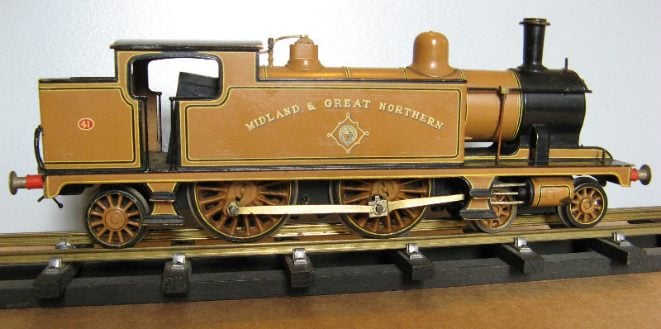
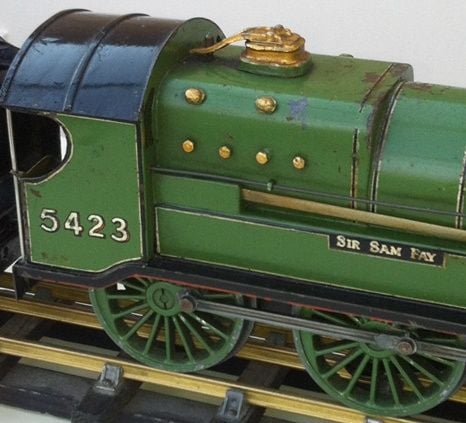
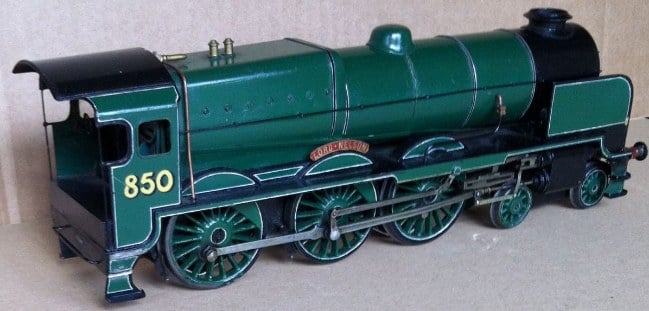

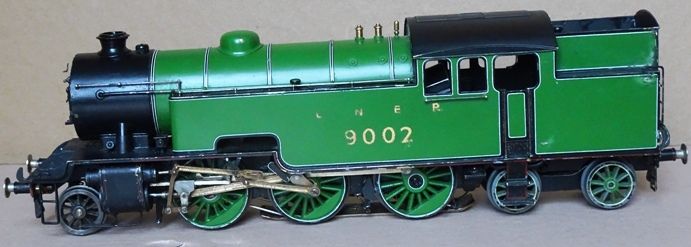
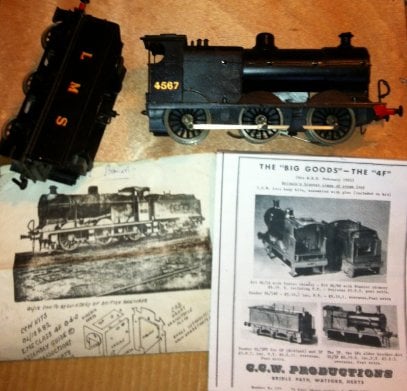

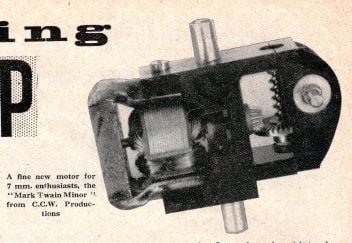
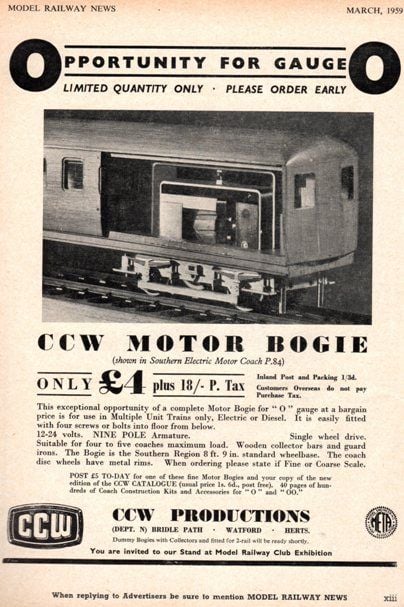
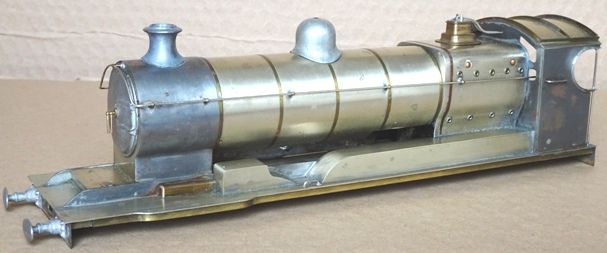

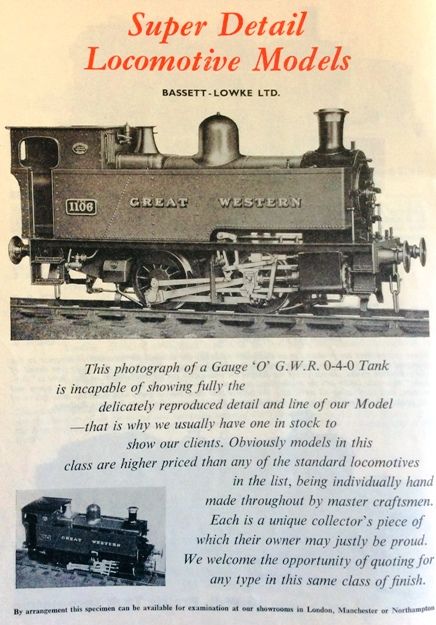
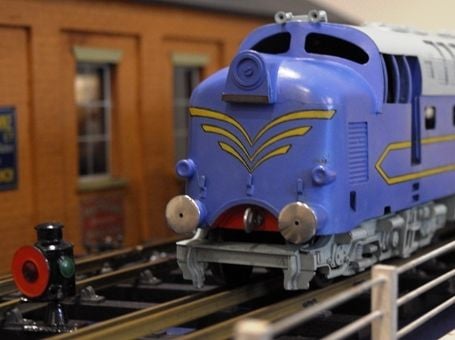
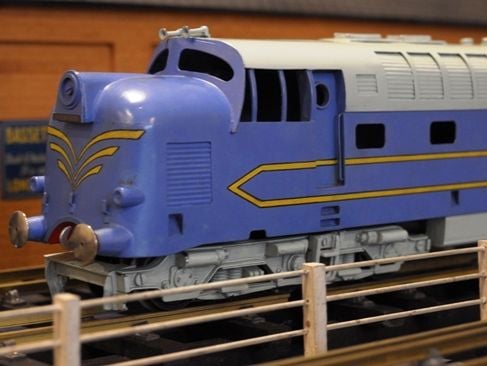
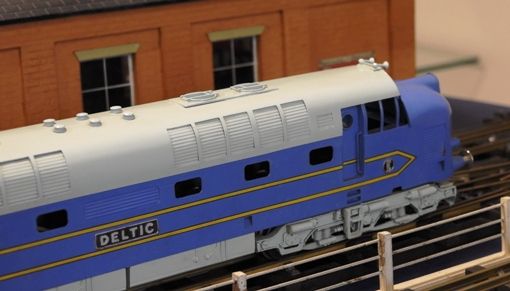
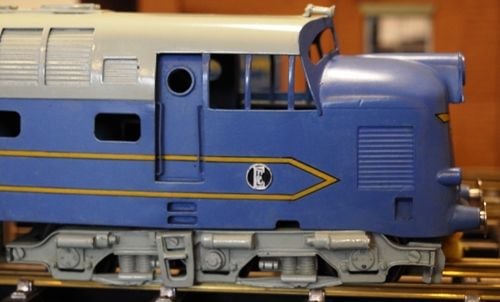
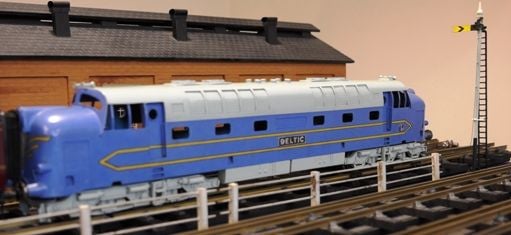

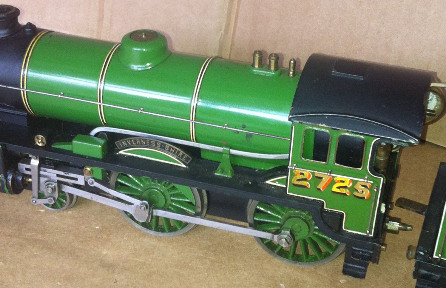
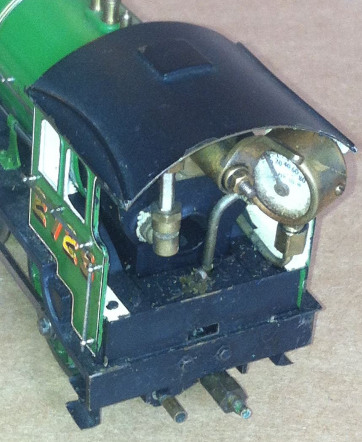
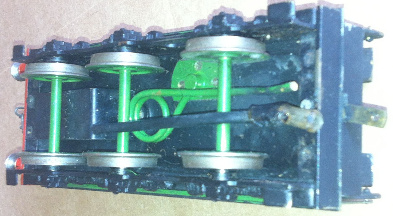
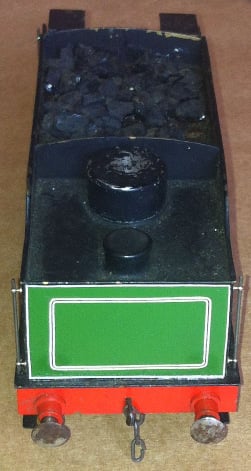
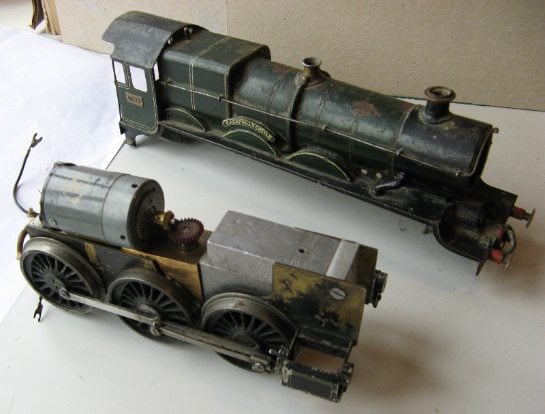
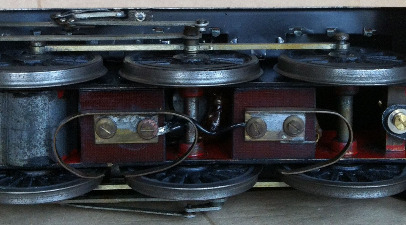
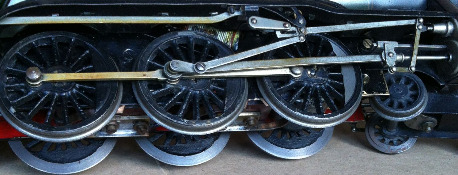
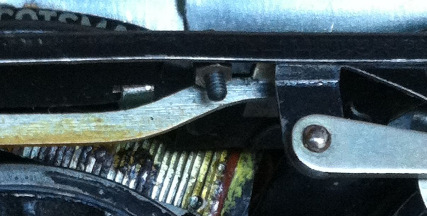
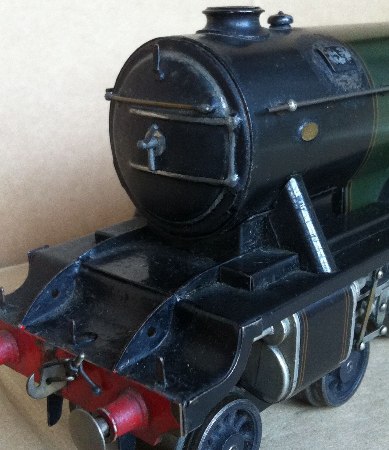
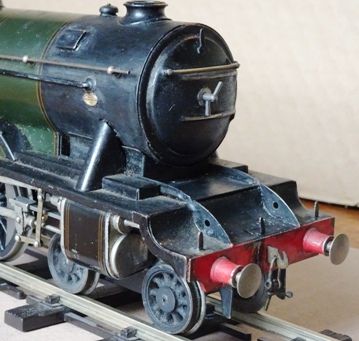
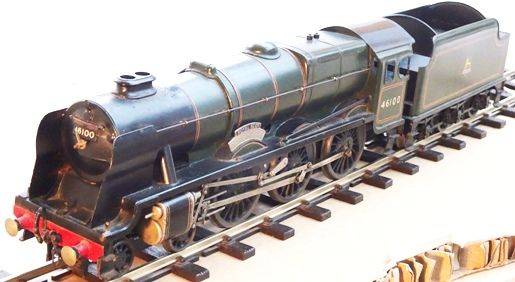
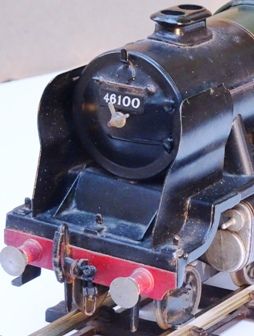
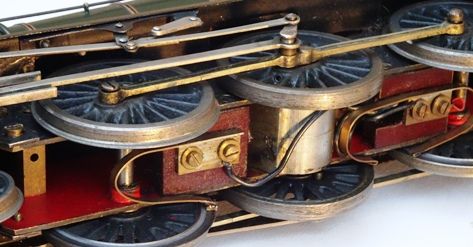
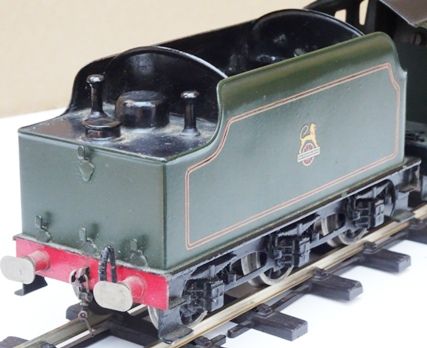
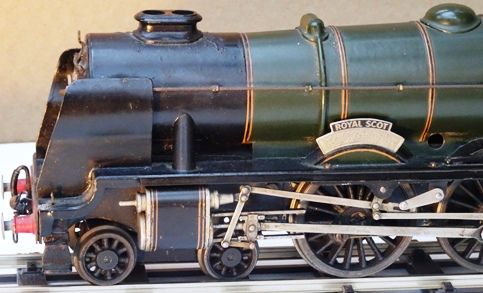
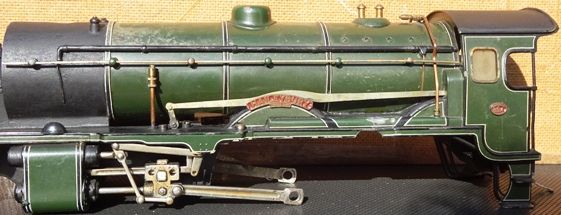
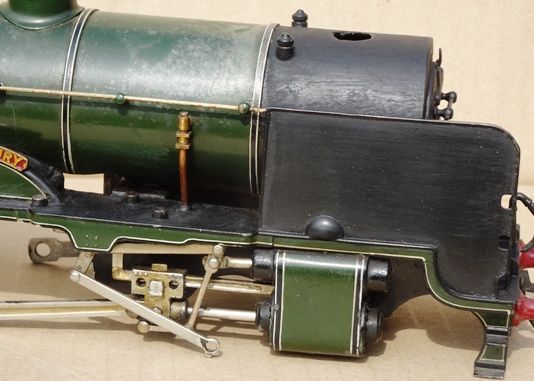
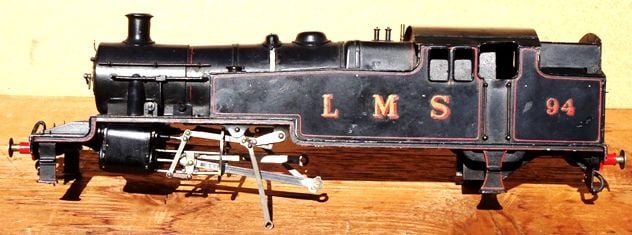
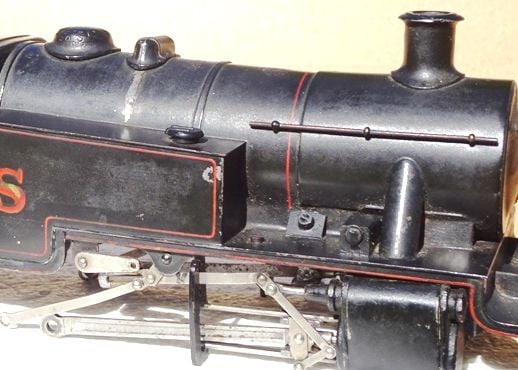
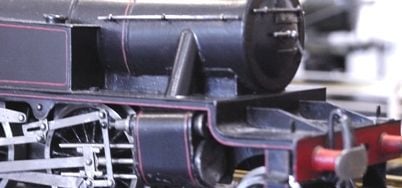
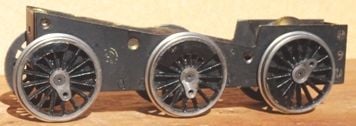
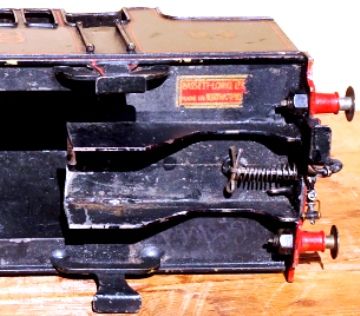
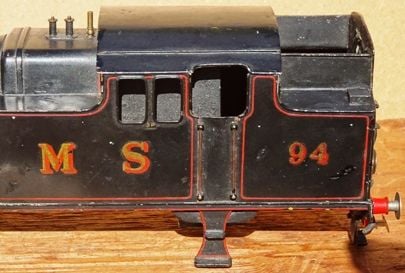
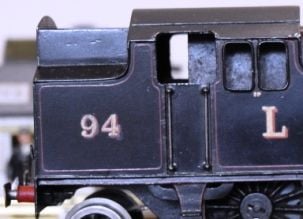
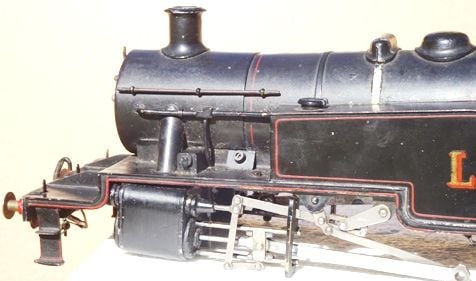
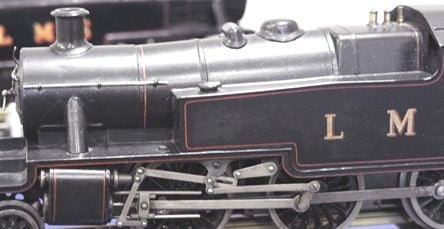
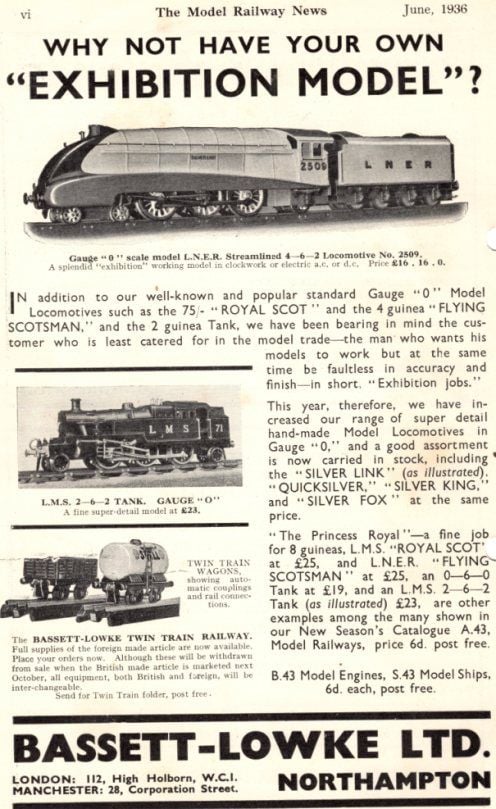
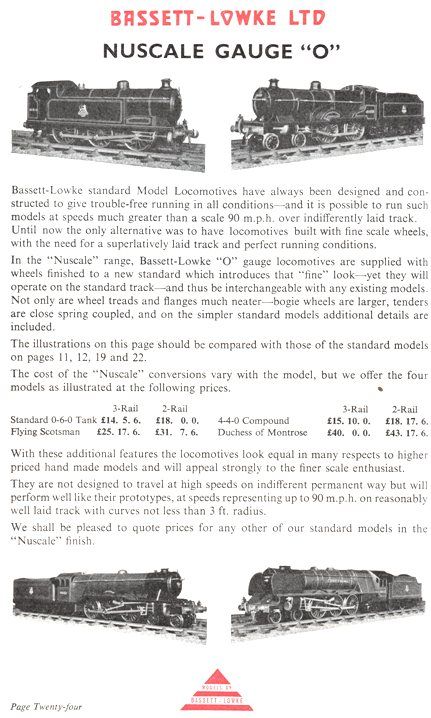
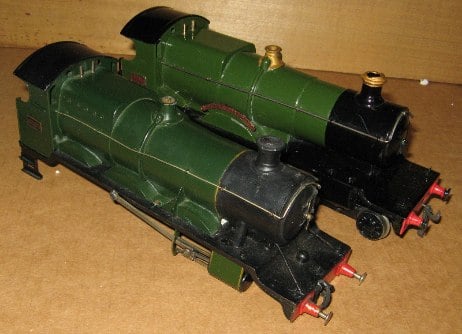
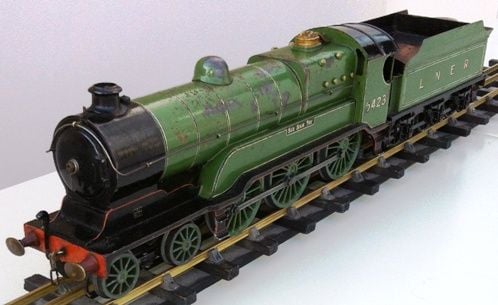
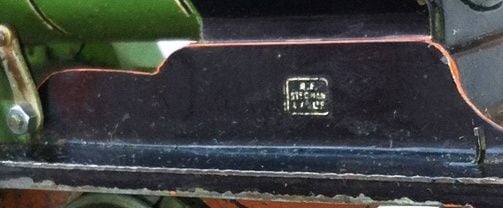


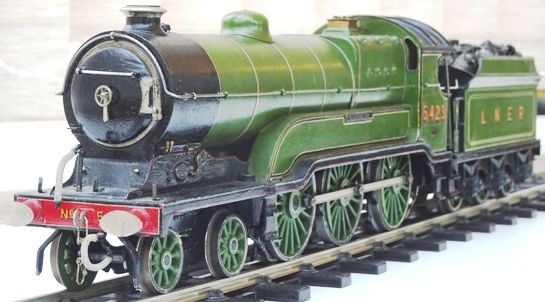
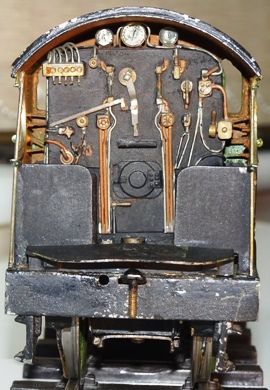
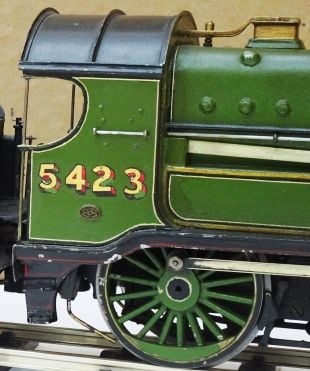
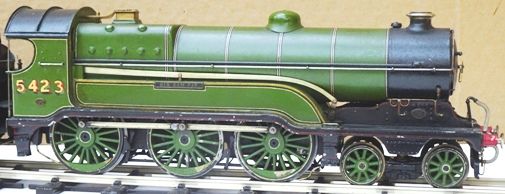
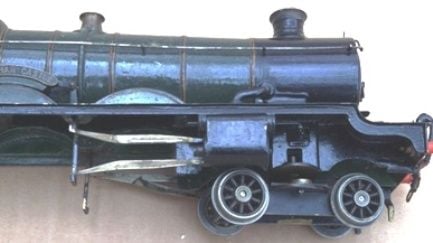
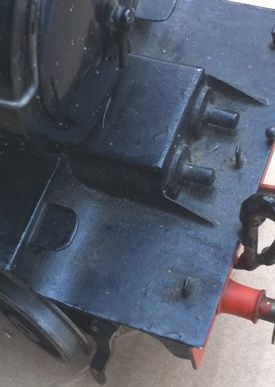
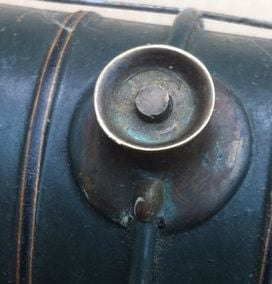
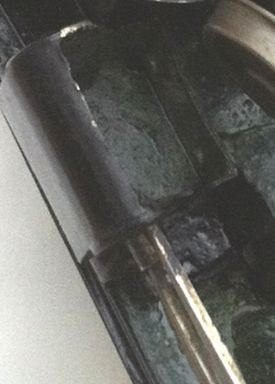
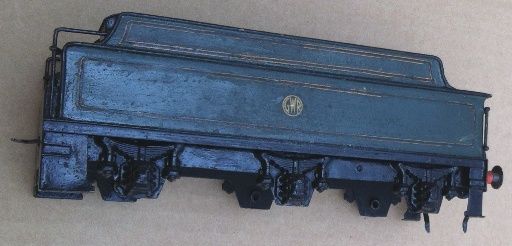
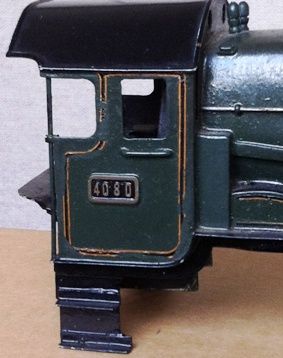
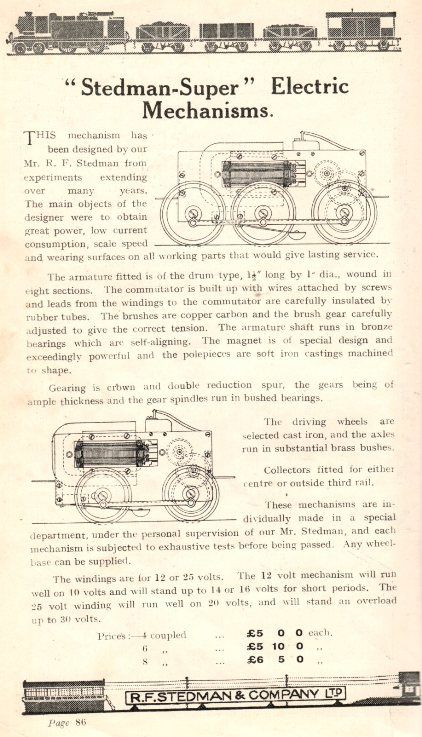
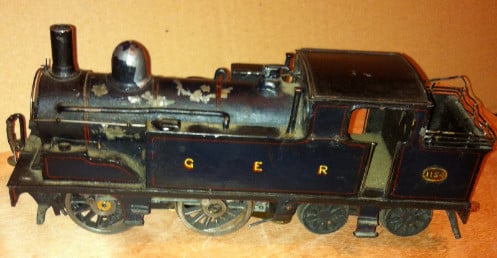
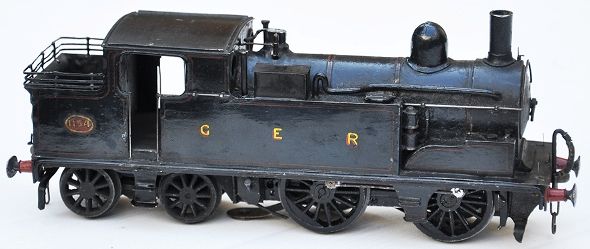
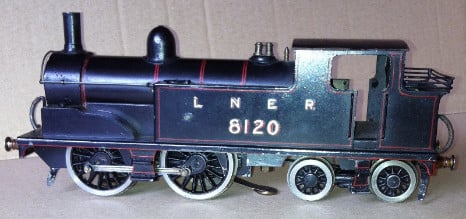
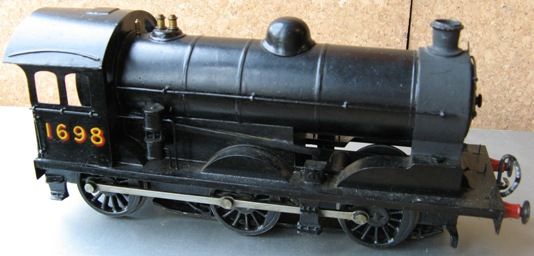
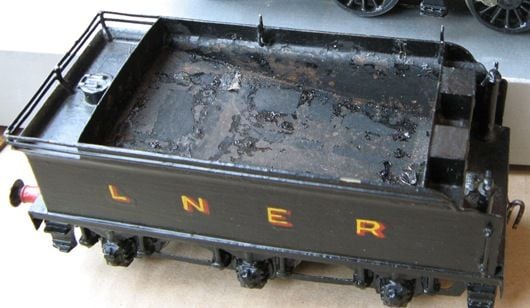
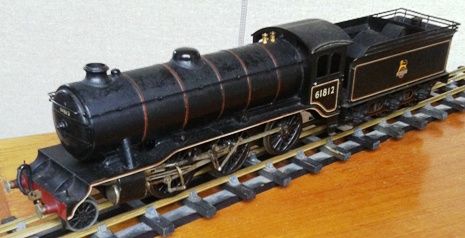
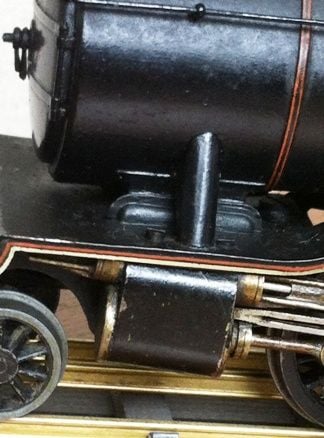
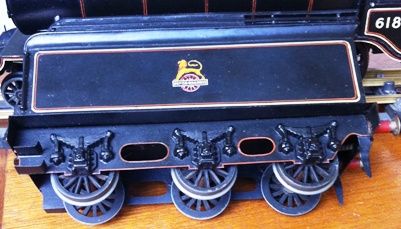
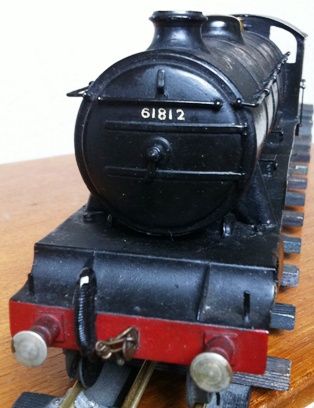



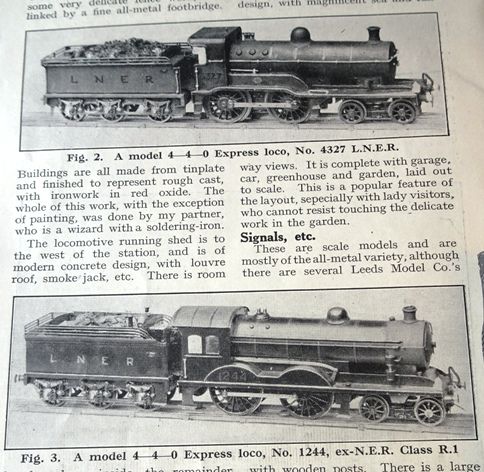
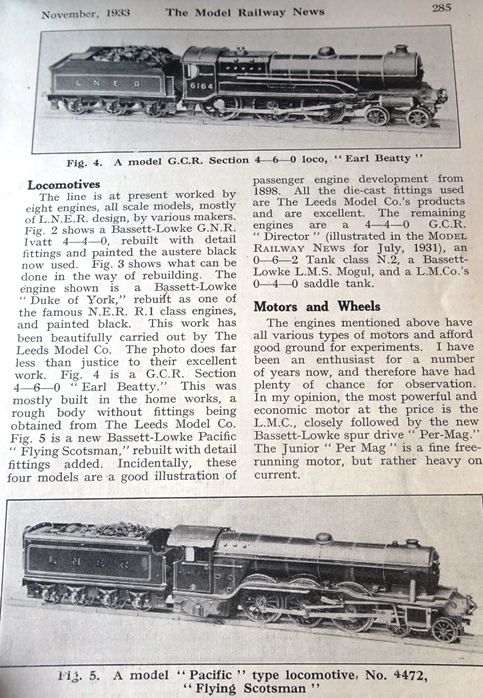
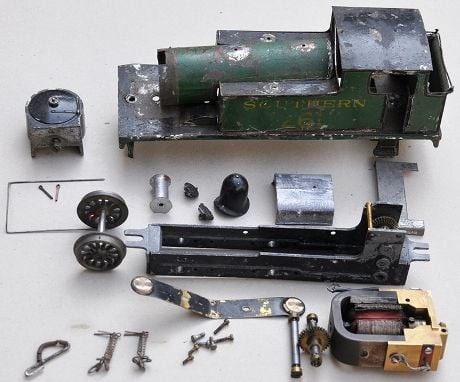
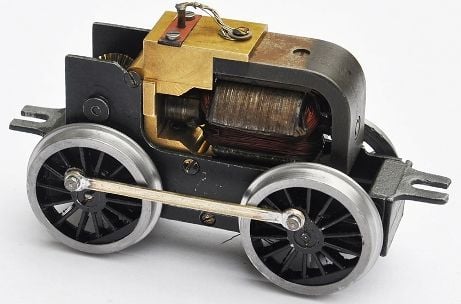
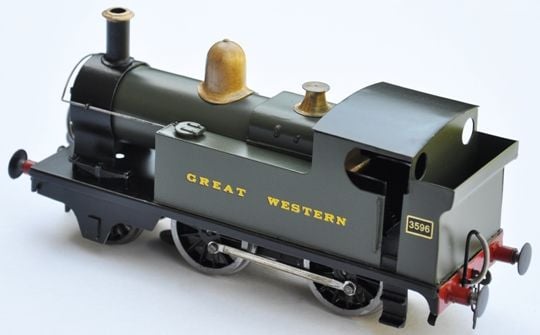
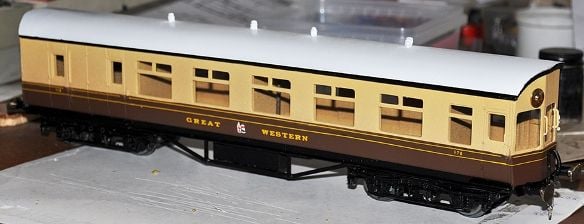


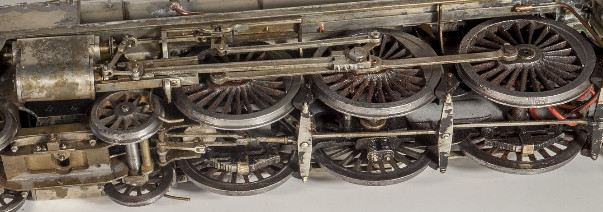
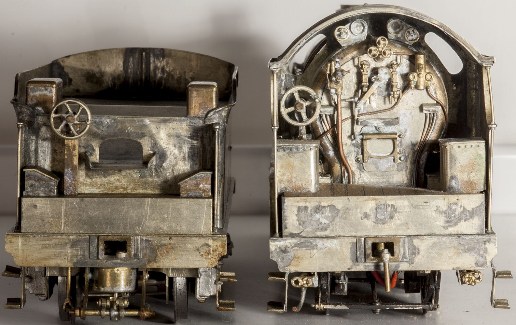
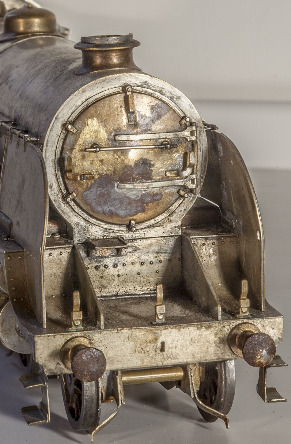

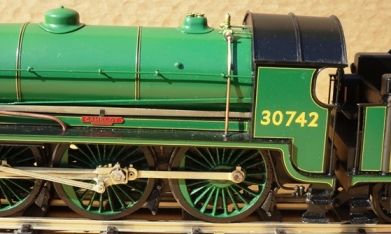
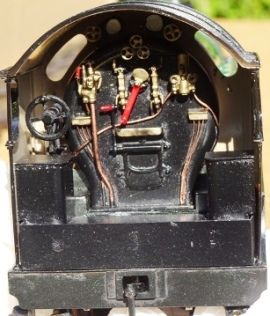
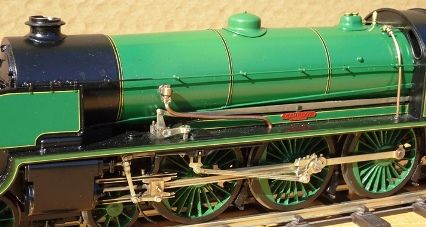
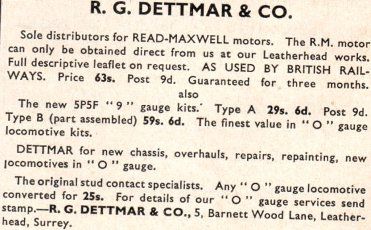
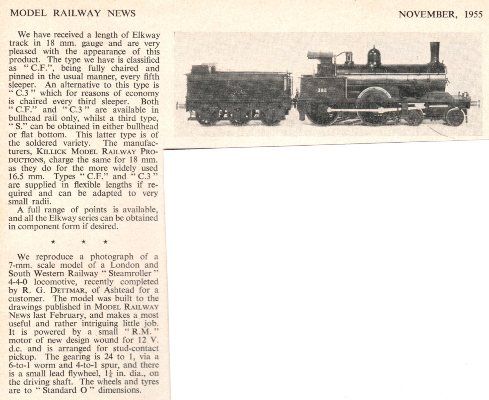
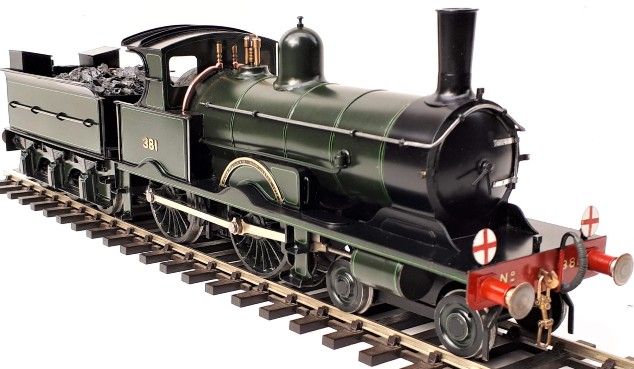
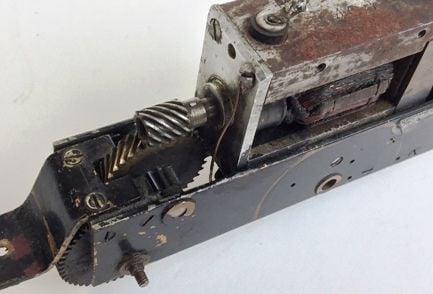
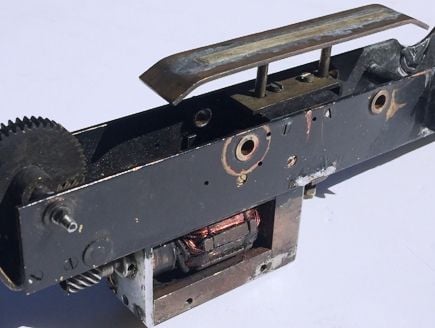
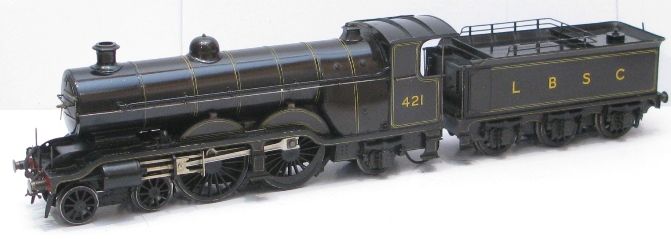

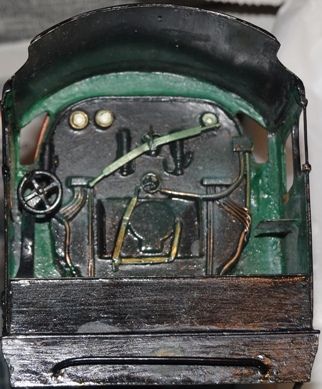
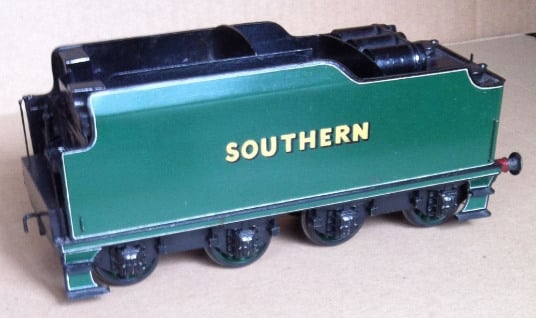
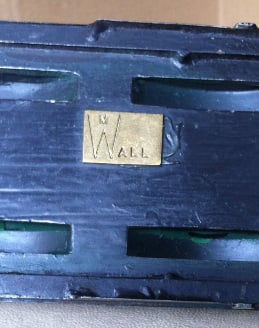

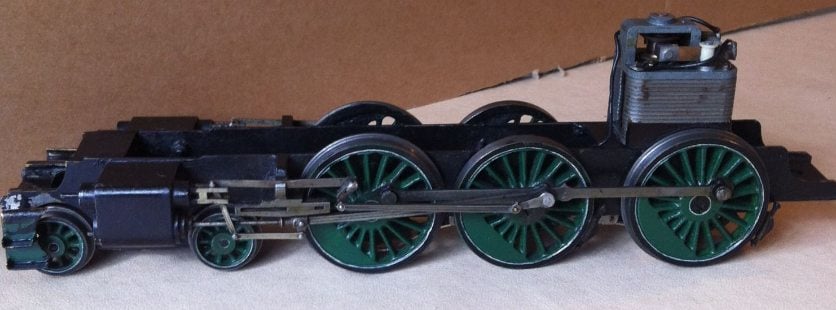
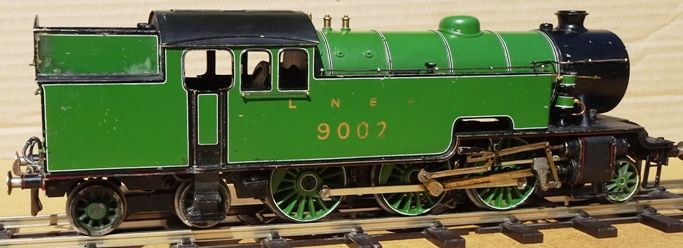
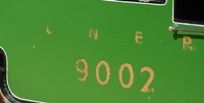
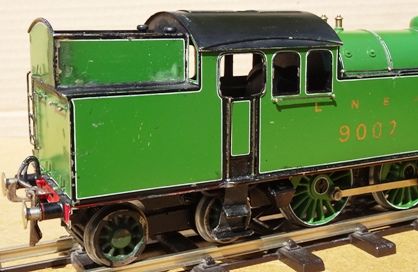

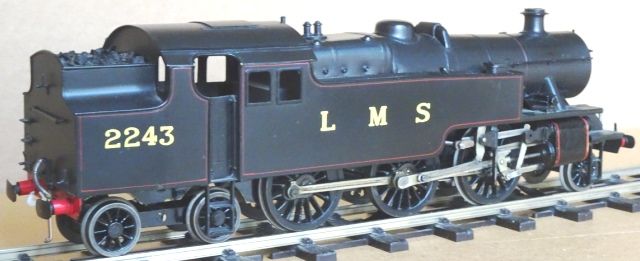
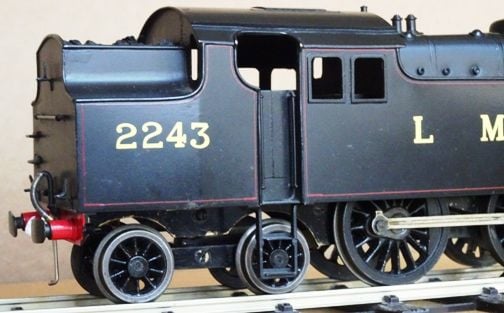




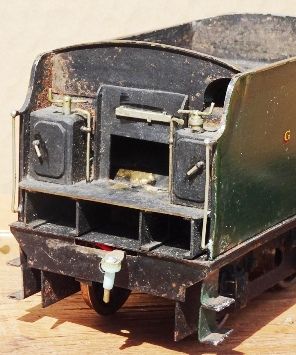

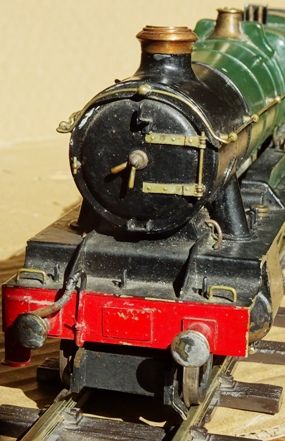
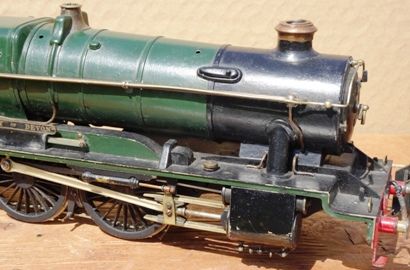






















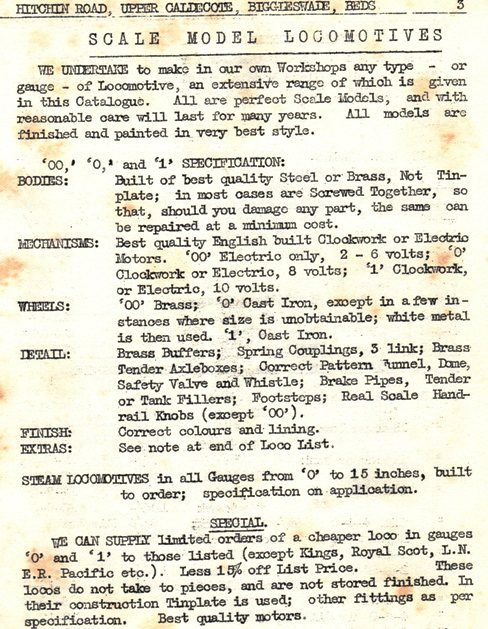
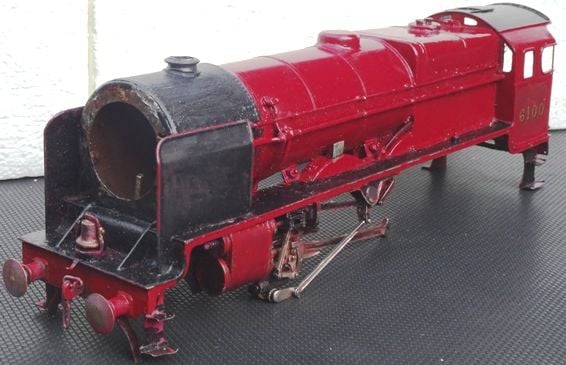
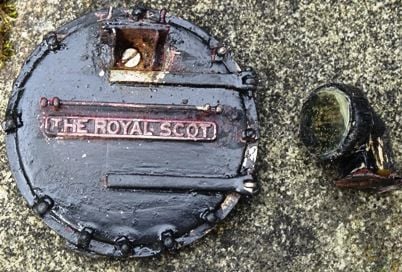
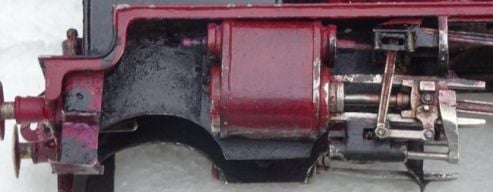
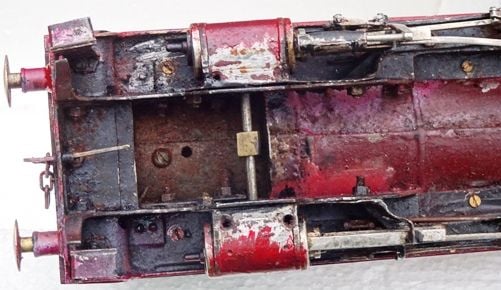
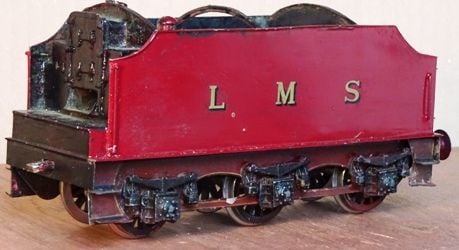
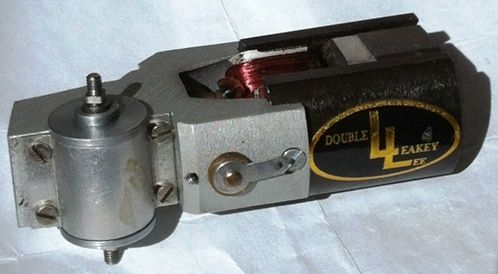
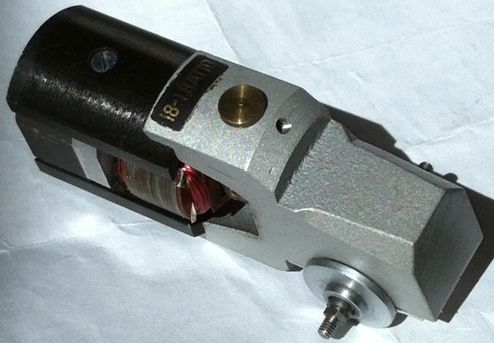
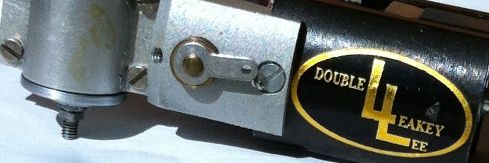
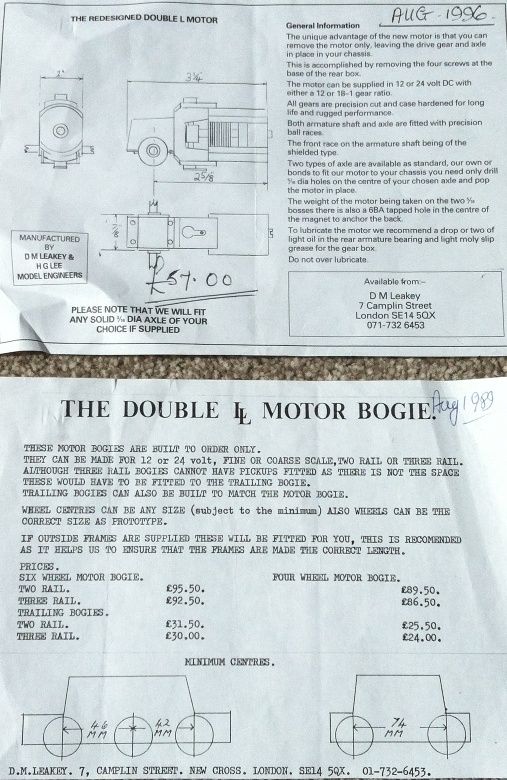
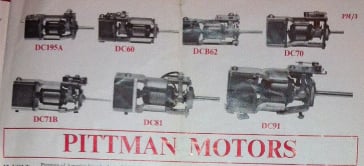
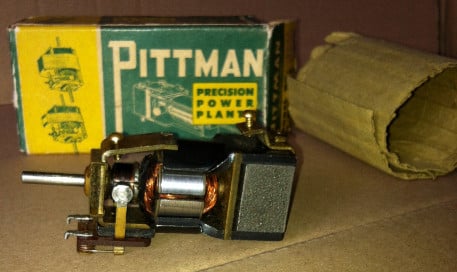
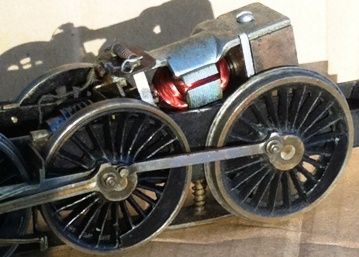
![img_2341[1] img_2341[1]](https://sites.create-cdn.net/siteimages/29/3/1/293105/9923670.jpg?1430435940)
